Magazine Article Structure: How to Master the Layout

Understanding the intricacies of a magazine article’s structure is crucial for writers and readers. A well-structured magazine article ensures clarity and engagement and enhances the reader’s comprehension and retention of the content. From captivating leads to compelling conclusions, every element plays a pivotal role.
Table of Contents
Visual elements, sidebars, and subheadings are also woven to provide depth and context. With the diverse formats available, it’s essential to discern which structure best fits the content and audience. Mastery of these structural elements promises impactful and memorable magazine articles.

Introduction to Magazine Article Structures
When picking up a magazine, readers must recognize the careful planning and structure of crafting each piece. However, the backbone of a magazine article is its structure, an invisible force guiding the narrative and ensuring clarity and engagement.
Why Structure Matters
Understanding the structure of a magazine article is beneficial for writers and readers. Just as architects need blueprints and chefs require recipes, writers rely on structure to build a coherent and impactful piece . The structure offers a systematic approach, ensuring that the writer’s message is conveyed precisely and that the reader’s journey is smooth and intuitive.
For readers, a well-structured article provides a clear path to comprehension. It ensures that the introduction grabs their attention, the main content delivers valuable information, and the conclusion ties everything together, leaving them with a clear takeaway or thought.
Components of a Magazine Article
At a high level, a magazine article consists of:
The Lead: This is the hook, the captivating start that grabs the reader’s attention.
The Body: This section delves into the heart of the topic, whether it’s an in-depth investigation, a profile, or a feature on a particular subject.
The Conclusion: It wraps up the article, providing closure or sometimes leaving the reader with something provocative to think about.
However, this is a simplification. Depending on the type of magazine article, the structure can vary, with elements such as sidebars, pull quotes, and visual aids adding depth and richness to the content.
Gains for the Reader
When readers familiarize themselves with these structures, they begin to read with a more informed perspective . They can anticipate the flow of the content, knowing where the author might present crucial facts, opposing viewpoints, or anecdotal evidence. This knowledge enriches the reading experience, allowing readers to extract more value from the article.
Moreover, an awareness of structure can heighten readers’ critical thinking skills. By understanding how an article is constructed, readers can more effectively assess the strength of an argument, the research’s depth, or the narrative’s bias.
A Mutual Understanding
In essence, the structure of a magazine article serves as a bridge between the writer’s intent and the reader’s understanding. For writers, it’s a tool to convey their message effectively. For readers, it’s a lens through which they can better interpret and engage with the content . A mutual appreciation of this structure ensures that the dance between writer and reader is harmonious, with each step or sentence leading seamlessly to the next.
The Anatomy of a Lead for a Magazine Article
In any compelling narrative, the beginning often sets the stage for what’s to come. For magazine articles, this critical beginning is known as the “lead.” It’s the gateway into the story, providing a glimpse of the content that awaits. The lead’s role is paramount: it either entices the reader to venture further into the article or fails to capture their attention, causing them to move on.
A magazine article example can significantly illuminate the power of a strong lead. Consider two articles on the same topic: while one might begin with a shocking statistic, the other could open with a personal anecdote. Both are valid approaches, but their impact on the reader can vary significantly depending on their execution and the target audience.
Different Types of Leads and Their Purposes
Anecdotal Lead: This type begins with a short story or personal account related to the main topic. It aims to humanize the subject and forge an emotional connection with the reader. For instance, a magazine article example about climate change might start with a villager’s firsthand account of witnessing glacier melt.
Question Lead: This lead engages the reader’s curiosity by posing a thought-provoking question. “What if you knew the exact day you’d die?” could be an intriguing lead for an article about genetic predictions.
Statistic Lead: This lead utilizes complex data or surprising statistics to underscore the article’s significance. An article discussing smartphone addiction might start with, “75% of millennials check their phones within 5 minutes of waking up.”
Descriptive Lead: Painting a vivid picture, this lead immerses the reader in a setting, scene, or situation. For a magazine article example about a bustling city market, the lead might dive into the cacophony of sellers, fragrances, and colors.
Quotation Lead: Beginning with a relevant quote, this lead lends authority or contrasts viewpoints. An article on freedom might open with a quote from Nelson Mandela or Martin Luther King Jr.
Contrast Lead: This lead highlights the disparity by juxtaposing two opposing ideas or scenarios. An article about the digital divide might start by comparing a day in the life of two students, one with and one without internet access.
Mastering the Lead: A Foundation for Success
Regardless of the type, a lead’s primary function remains consistent: to captivate and guide the reader into the article’s main body. It’s the reader’s first impression; as the old adage goes, first impressions matter. Whether drawing from a magazine article example or crafting an original piece, understanding the anatomy of a lead is crucial for anyone aiming to engage and inform their audience effectively.

Main Body Formats: From Narratives to How-Tos
The main body of a magazine article is where the meat of the content lies. It’s the detailed exploration, the unfolding narrative, the in-depth discussion. Depending on the content and purpose, the magazine article format for the main body can vary widely. From weaving engaging narratives to instructive how-tos, the format chosen significantly influences the reader’s experience and comprehension.
Narrative Format
Application: Used primarily for personal essays, long-form journalism, and features.
Description: This format relies on storytelling techniques, often flowing like a novel or a short story. It might follow a chronological order or use flashbacks, with character development, plot, and a climax.
Real-life Example: An article detailing a mountaineer’s ascent of Mount Everest would use the narrative format. It would chronicle the journey from the base camp and capture the challenges, personal emotions, and eventual triumph or setback.
Expository Format
Application: Common for articles that aim to inform or explain without the writer’s personal opinion.
Description: This format provides a straightforward, fact-based explanation of a topic. It relies heavily on research, expert quotes, and data.
Real-life Example: An article exploring the reasons behind bee population decline, detailing the role of pesticides, climate change, and habitat loss, would adopt an expository magazine article format.
How-to or Instructional Format
Application: Used for articles that guide the reader through a process or instructions.
Description: This format breaks down a task into digestible steps, often supplemented with tips, illustrations, or cautionary notes. It’s direct and often written in the second person, addressing the reader directly.
Real-life Example: An article teaching readers how to create a rooftop garden, complete with steps, necessary tools, and best plants for rooftop environments, would utilize this format.
Q&A Format
Application: Typical for interviews or articles that revolve around experts’ insights.
Description: Presented as a series of questions followed by answers. This magazine article format is straightforward but engaging if the questions are insightful and the solutions provide depth.
Real-life Example: An interview with a renowned climate scientist, where they answer queries about global warming, its impact, and mitigation measures, would adopt a Q&A structure.
Listicle Format
Application: Popular in modern digital magazines or platforms catering to readers looking for quick, engaging reads.
Description: As the name suggests, it presents information in a list form, often numbered or bulleted.
Real-life Example: “10 Revolutionary Women Writers of the 21st Century” would be a listicle briefly describing each writer and their contributions.
Embracing Versatility
The main body’s structure of a magazine article is as varied as the topics they cover. By understanding each magazine article format and its applications, writers can ensure their content is engaging and compelling, catering to their readers’ specific needs and preferences.
Using Sidebars for Additional Insight
In magazine layouts, sidebars often stand out as strategic design elements, adding layers of context, detail, or intrigue to the main content. A well-designed sidebar doesn’t just supplement the article but elevates it, providing readers with enriched understanding and engagement.
The Role of Sidebars in Magazine Article Design
The primary function of a sidebar in a magazine article design is to offer supplemental information related to the main content. Instead of disrupting the flow of the article with tangential or in-depth details, sidebars house this additional data, ensuring the main narrative remains crisp and focused. Sidebars can:
Highlight Key Points: Summarizing essential information or presenting “at a glance” insights.
Delve Deeper: Offering a more in-depth exploration of a specific point mentioned in the article.
Provide Context: Sharing background information or historical data relevant to the topic.
Showcase Visuals: Including charts, graphs, or images that support the article’s content.
Share Testimonials or Quotes: Giving voice to experts or those affected by the topic.
Designing Effective Sidebars
The magazine article design for sidebars varies, but there are a few best practices to ensure they serve their purpose effectively:
Contrast with Main Content: Different fonts, colors, or backgrounds differentiate the sidebar from the primary content.
Keep It Concise: Sidebars should be brief, offering bite-sized information. Overloading a sidebar can overwhelm readers and detract from its purpose.
Strategic Placement: Position the sidebar close to the relevant content, ensuring readers naturally gravitate towards it as they progress through the article.
Use Clear Headings: If the sidebar contains different types of information, use subheadings to guide the reader.
Enhancing Reader Engagement and Understanding
Including sidebars in a magazine, article design does more than beautify a page or fill space; it significantly amplifies reader comprehension and interaction. By offering additional insights without breaking the primary narrative’s flow, sidebars cater to readers who crave a deeper dive into specific points.
For instance, in an article about the benefits of organic farming, a sidebar could provide statistics on increased organic produce sales over the years. This immediate access to supplemental data can strengthen the article’s argument and give readers a holistic understanding.
Moreover, for readers skimming the article, sidebars can act as focal points, drawing their attention to critical facts or insights that might otherwise be buried in the main content.
The Sidebar’s Pivotal Role
Sidebars play a pivotal role in the intricate dance of magazine article design. They enhance aesthetics and enrich content, providing readers with a multi-dimensional exploration of topics. When designed with purpose and precision, sidebars can transform a good article into a great one.

The Power of Effective Headings and Subheadings
The tapestry of a magazine article is not just its intricate and detailed content but also its magazine article frame—constructed using headings and subheadings. While these elements might seem simple, they wield a transformative power in guiding and enhancing the reader’s journey and comprehension.
Significance in the Magazine Article Frame
Within the complex structure of a magazine piece, headings and subheadings function as navigational beacons. Just as a map uses landmarks to help travelers find their way, the magazine article frame uses these elements to direct readers through its content.
Setting the Tone: The main heading is the reader’s first interaction with the content. A well-crafted header grabs attention and sets expectations, highlighting the article’s tone and focus.
Segmentation: Particularly in lengthy articles, subheadings break the text into digestible sections. This segmentation aids readers in understanding the article’s flow and the progression of ideas.
Facilitating Skimming: Only some readers dive deep into the content in today’s fast-paced world. Many skim to gather the gist. Headings and subheadings allow these readers to quickly pinpoint areas of interest and understand the main takeaways.
Breaking Down Information Effectively
An article without clear divisions can appear daunting, much like a long, winding road without signposts. Headings and subheadings work to classify information, making it accessible and easily digestible.
Highlighting Key Points: Through concise and impactful subheadings, writers can emphasize the core ideas of each section, ensuring readers grasp the essential messages even if they don’t delve into every paragraph.
Creating a Logical Flow: Sequential and thoughtfully crafted headings guide readers through a logical journey, from introducing a topic to providing evidence, showcasing examples, and concluding.
Aiding Memory Retention: By compartmentalizing information, headings and subheadings make it easier for readers to recall details. The human brain often remembers structured information better than continuous, undivided content.
Crafting Effective Headings in the Magazine Article Frame
While the utility of headings and subheadings is evident, their efficacy relies on their construction. An impactful header should:
- Be concise yet descriptive.
- Engage the reader’s curiosity.
- Reflect the content it precedes.
- Be consistent in style throughout the article, ensuring a cohesive magazine article frame.
The Unsung Pillars
While imagery, quotes, and narrative arcs often steal the limelight in magazine articles, the humble headings and subheadings remain the unsung pillars of the magazine article frame. They structure and shape the content , ensuring the message is noticed in the maze of words. As integral parts of the magazine article frame, they are pivotal in enhancing readability, understanding, and engagement.
Integrating Visual Elements: Photos, Illustrations, and Infographics
The intricate blend of words in a magazine article forms a tapestry of information, weaving narratives and presenting insights. However, visuals such as photos, illustrations, and infographics play a quintessential role in any effective magazine article template. They are not mere decorations but powerful storytelling tools that complement and amplify the textual content.
The Role of Visuals in a Magazine Article Template
Instant Engagement: A picture is worth a thousand words. In the bustling world of content consumption, visuals can instantly grab readers’ attention, anchoring them to the article. Before delving into the textual content, an evocative image or a captivating infographic can intrigue readers, setting the tone for what’s to come.
Complementing the Text: A magazine article template’s relationship between text and visuals is symbiotic. While words convey detailed information, visuals support, emphasize, and enhance those details. For instance, an article on wildlife conservation becomes infinitely more impactful when accompanied by a striking image of an endangered species in its natural habitat.
Breaking Monotony: Long-form articles can appear daunting and monolithic. Integrating visuals breaks the textual monotony, offering readers a refreshing change of pace and facilitating easier content digestion.
Facilitating Understanding: Complex topics or data-heavy discussions can be challenging to convey solely through words. Here, infographics shine. They simplify intricate data, presenting it in a digestible, visually appealing manner. A magazine article template incorporating infographics can transform a dense topic into an engaging, easily understandable narrative.
Enhancing the Magazine Article Template with Varied Visuals
Photos: Authentic, high-resolution images can evoke emotions, set contexts, or provide real-life examples. They add a layer of realism to the article, allowing readers to visualize described scenarios or subjects.
Illustrations: These offer a more flexible and creative avenue than photos. Images can be tailored to match the article’s tone, whether whimsical, serious, or abstract. They add a unique flair to the magazine article template, making it stand out.
Infographics: As visual representations of information, infographics distill complex data or concepts into easily graspable visuals. They’re especially effective in articles that deal with statistics, processes, or timelines.
The Visual-Textual Symphony
The art of crafting an influential magazine article lies in the harmonious integration of text and visuals. In a well-designed magazine article template, each visual element is strategically positioned to reinforce, complement, and elevate the textual content. Through this blend, articles achieve a dynamic, multifaceted form of storytelling, ensuring readers understand and experience the content.

The Art of Crafting a Memorable Conclusion for a Magazine Article
In magazine articles, every section has a unique role, from the gripping leads to the compelling body. But, within the intricacies of a magazine article layout, the conclusion stands out as the final note. This swan song leaves a resonant echo in the reader’s mind. Much like the finishing stroke in a painting, it completes the picture, offering readers clarity, insights, and a sense of fulfillment.
The Quintessential Role of a Conclusion in the Magazine Article Layout
Every component of a magazine article layout has a purpose, and the conclusion is no exception. It is the culmination of the reader’s journey, a destination that should leave them informed, contemplative, and spurred into action.
Leaving a Lasting Impression: The ending of an article often defines its remembrance. While readers may skim sections of the main body or gloss over details, the conclusion offers a summarized essence, reinforcing the core message. A memorable conclusion ensures the reader leaves with a clear takeaway, deepening the article’s purpose in their memory.
Providing a Sense of Completion: The conclusion acts as the seal, closing the narrative. In a well-structured magazine article layout, the conclusion ensures all threads spun in the narrative converge, offering readers a rounded perspective. This closure prevents readers from feeling adrift, ensuring they leave with a sense of satisfaction.
Inspiring Action and Reflection: Beyond mere summarization, a robust conclusion nudges readers towards introspection or tangible action. Whether challenging them with a thought-provoking question, presenting a call to action, or urging them to reconsider preconceived notions, the conclusion’s potential to instigate change is immense.
Tailoring the Conclusion to the Magazine Article Layout
While the significance of a conclusion is undeniable, its effectiveness is contingent on how it’s integrated into the overall magazine article layout.
- Consistency with the Theme: The conclusion should harmonize with the article’s overarching theme, ensuring a fluid transition from the main body.
- Avoid Introducing New Elements: A conclusion is a synthesis, not a place for fresh revelations. New information can jolt the reader, detracting from the sense of closure.
- Engage Emotionally: Evoking emotions, whether hope, concern, or inspiration, amplifies the lasting power of the conclusion. An emotional connection ensures readers carry the article’s essence with them.
The Lasting Legacy of Conclusions
In the multifaceted design of a magazine article layout, the conclusion emerges as the final brushstroke, the defining silhouette against the backdrop. Its power lies in its subtlety, its ability to encapsulate the narrative’s spirit, and its potential to leave a lingering trace in the mindscape of readers. Crafting this section with intention and finesse ensures that an article doesn’t just end but resonates, echoing its core message long after the last word is read.
Common Magazine Article Types and Their Unique Structures
The world of magazine article writing is rich and varied, offering a plethora of formats that cater to different content needs and audience preferences. Each type of article possesses a distinct structure crafted to enhance its primary objective. Let’s delve into some common magazine article types and unpack their unique structural nuances, offering illustrative examples for better understanding.
Feature Articles
Structure: This is the crown jewel of magazine article writing, often diving deep into a topic, person, event, or trend. Feature articles typically start with a strong lead, setting the tone and drawing readers in. They then progress through a detailed body with subheadings, anecdotes, interviews, and personal reflections. The conclusion often circles back to the lead, offering closure.
Example: A feature article on the impact of climate change on polar bears might begin with a heart-wrenching account of a lone bear’s struggle, delve into scientific data, expert opinions, and local stories, before ending with a broader reflection on nature’s fragile balance.
Structure: Profiles focus on individuals, providing an in-depth look at their life, achievements, personality, and more. After a compelling introduction highlighting the individual’s significance, the body elaborates on their background, significant milestones, challenges, and personal anecdotes. The conclusion often offers insights into their future plans or broader impact.
Example: In magazine article writing, a profile on a renowned author might begin by discussing a pivotal moment in their latest book, dive into their writing journey, personal life, and literary achievements, and conclude with their legacy in the literary world.
News Stories
Structure: Unlike newspapers, magazine news stories offer more depth. They commence with a headline and lead that outlines the main event or update. The body provides detailed information, background context, related events, and expert opinions. It concludes with implications or future predictions.
Example: A news story about a technological breakthrough in renewable energy sources might start with the discovery’s announcement, explain the technology, its potential benefits and challenges, and conclude with its potential global impact.
How-to Articles
Structure: These are instructional pieces. They start with an introduction explaining the importance of the task. The main body follows a step-by-step format, often accompanied by subheadings, bullet points, and images for clarity. The conclusion offers additional tips or emphasizes the benefits of completing the task.
Example: An article on “How to Grow Organic Tomatoes” would detail the process, from selecting seeds to harvesting, guiding readers through each phase with clear instructions and visual aids.
Structure: Reviews assess products, books, films, etc. They begin with an introduction that provides context. The body delves into features, pros, cons, and personal experiences. The conclusion offers a verdict or recommendation.
Example: A movie review might introduce the film’s context, discuss its plot, characters, direction, and cinematography strengths and weaknesses, and end with a recommendation.
In Summation
The diversity in magazine article writing ensures writers can approach subjects from various angles, presenting engaging and apt content. By understanding the unique structures associated with each type, writers can craft pieces that resonate, inform, and captivate their readers.
What are feature articles?
Feature articles are comprehensive pieces that delve deep into a topic, person, event, or trend. They combine detailed analysis, anecdotes, interviews, and personal reflections to give readers an in-depth understanding.
Are magazine news stories similar to newspaper articles?
While both report on current events, magazine news stories offer more depth and context than their newspaper counterparts. They often include background information, related events, and expert insights.
What is the primary objective of a how-to article?
How-to articles are instructional pieces guiding readers through a process or task step-by-step . They are structured for clarity, often using subheadings, bullet points, and visuals to ensure understanding.
How do reviews offer a verdict or recommendation?
Reviews assess products or media by discussing their features, strengths, and weaknesses. Based on this assessment and the writer’s personal experience, a conclusion provides a verdict or recommendation to readers.
Can a magazine article combine multiple formats?
While each type has a distinct structure, skilled magazine article writing can blend elements from various formats to create a unique, engaging piece tailored to the topic and audience.

Learn How To Develop Launch-Ready Creative Products
Download How to Turn Your Creativity into a Product, a FREE starter kit.

Advertisement
Create a Memorable Social Media Experience
Get the content planner that makes social media 10x easier.

Invite Your Customers To A Whole New World
Create a unique user experience.

Maximize Your Brand and Make Your Mark
Custom brand assets will take you to new heights.

Side Hustle: How to Balance with Full-time Work

Niche Markets: How to Integrate Customer Feedback

Business Ideas in Tech: How to Find Potential

Headlines: How to Craft for Social Media

Email Marketing vs. SMS Marketing: How to Choose

Side Hustle: How to Start One from Home
You are using an outdated browser. Please upgrade your browser or activate Google Chrome Frame to improve your experience.
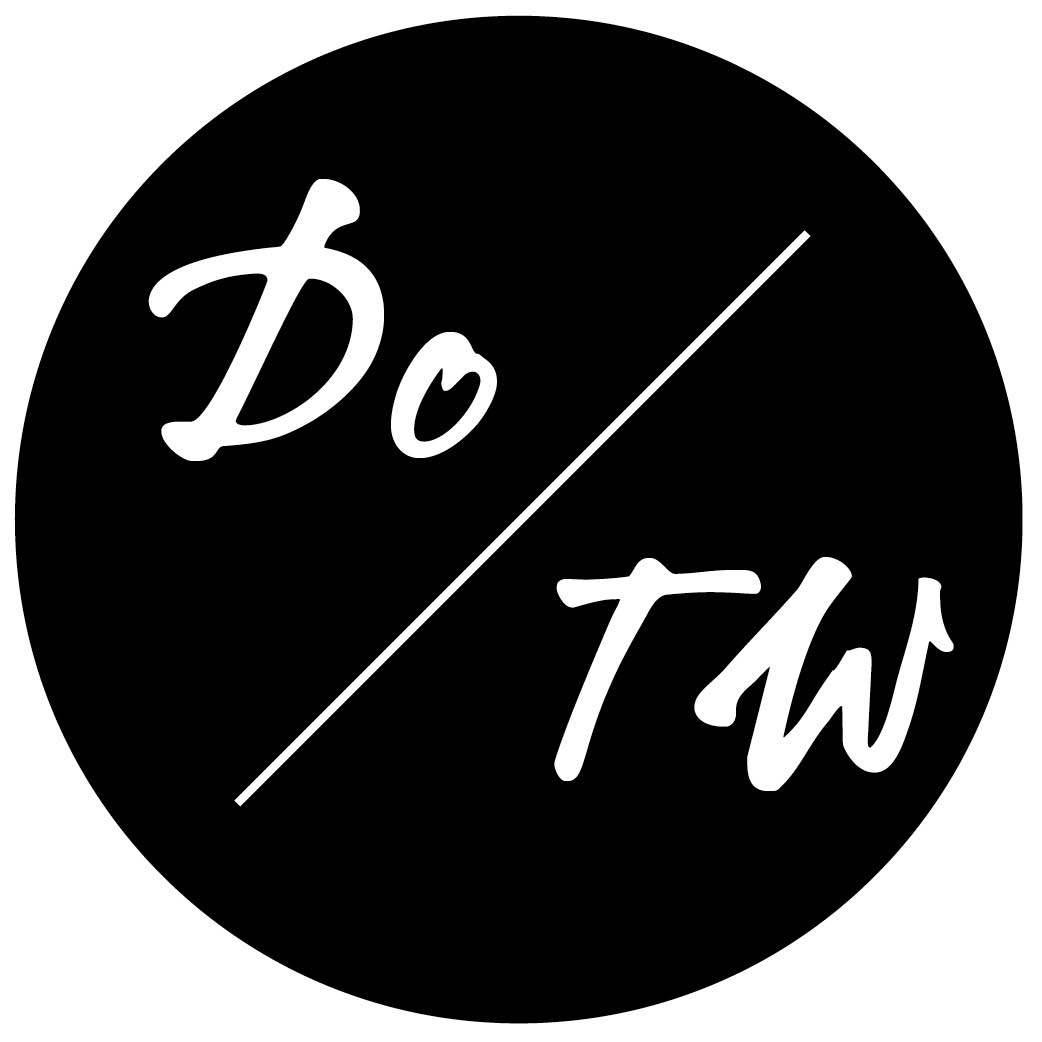
The Six-Figure Travel Writer
How to analyze a magazine to ensure successful pitches.
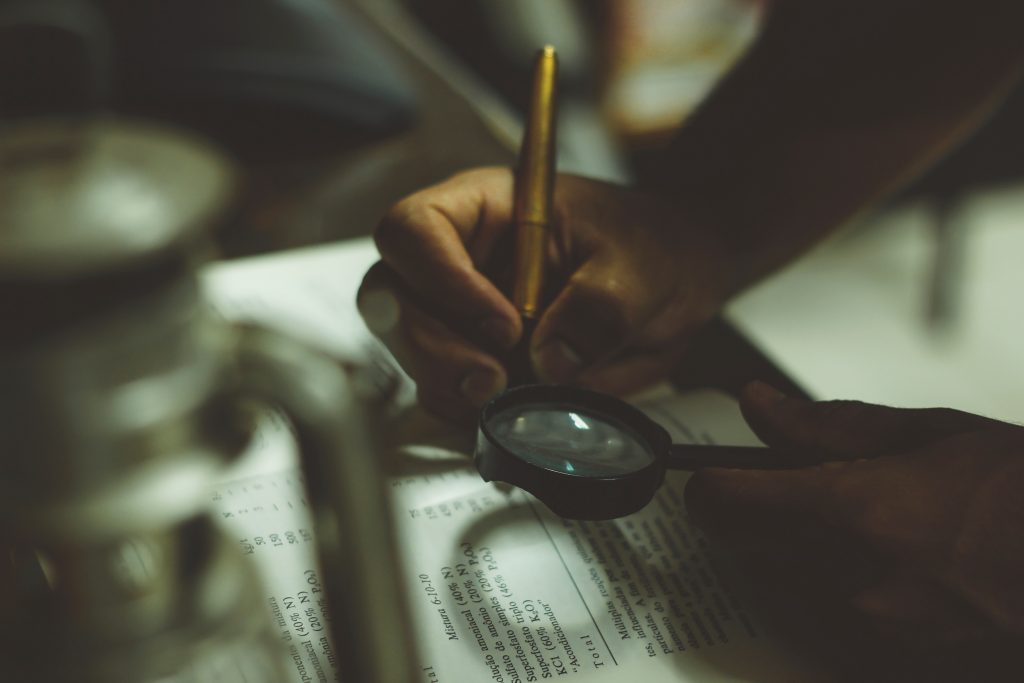
You need to take it from a pile of glossy paper that you put on a pedestal or can’t imagine seeing your own humble words in to a framework of component parts that is built from the ground up every month.
Understanding the Structure of the Magazine Writes Your Pitches For You
There’s a saying that “there’s no such thing as writer’s block…” that ends differently depending on who you ask. I personally feel like it’s a lack of research; you’re not really prepared to write whatever you are laboring over producing.
Pitching is one of the areas where this is most apparent. If you’re having trouble coming up with ideas, it always boils down to one thing: you don’t have ideas. If you think you have ideas and are having trouble pitching, it’s because they’re ideas that don’t fit the publication you’re trying to pitch, or perhaps any publication.
For new writers, I find the magazine-then-idea approach much easier than having an idea and trying to track down the magazine to shoehorn it into. When you’re new, you don’t know hundreds of magazines and what they’re looking for off the top of your head, and, more importantly, having your article idea come from reading the magazine and familiarizing yourself with its style and the type of articles it runs makes your idea much more likely to be successful.
When you break down a magazine properly, it’s next to impossible not to get article ideas—no matter how blocked you think you are. I dare you. Let’s try it!
Work the Steps, Reap the Benefits
Set aside at least an hour, if not two, the first time you do this exercise. When you are first rewiring your brain to look at a magazine as an editor does rather than as a reader, breaking down a magazine will take much longer.
Step 1: The Table of Contents Ignore the cover for now, flip through the first pages of advertisements, and find the table of contents:
- How is it organized?
- Is there an initial page just highlighting the features in the current issue followed by a page of departments? Vice versa?
- Is it strictly chronological or topical?
- Do they include headlines and subheads for each article or just features?
- How long are the heads and subheads?
- Do they follow a pattern?
All of these factors tell you how a magazine’s production staff believes readers approach the publication. Use this to shape the headlines and subheads in your own pitches.
Step 2: The Masthead If you’re using your own copy of the magazine, which I recommend you do so that you can circle things and write notes on articles, continue past the table of contents to the masthead, and rip it out. The masthead will guide us through the first level of analysis of the magazine: seeing which sections are written by freelancers.
Flip through the entire magazine without reading any articles and make a list on a separate sheet of paper or on the table of contents of all sections written in-house. If there is no byline listed on an article at all, the section is probably written in-house every month. If there is a byline listed, but it is the name of someone on the masthead , it might be open to freelancers and only written by a staff member some of the time.
When you cross reference the masthead with articles, note, in particular, which articles are written by contributing editors . These folks are also freelancers, but they contribute regularly to the publication. Articles written by contributing editors are often open to other freelancers, unless the column carries an image of the author, which means it’s penned by the same person every month.
Step 3: The Text Now that you know what sections are worth dreaming up ideas for and which are off-limits, start reading the issue cover to cover, and ask yourself:
- What is the flow of the language—especially in articles written by staff members?
- Do they trend more to short sentences or long?
- Third person or first?
- Colloquial phrases or exquisitely perfect grammar and syntax?
- Do they like a certain type or length of lede ?
Every time you reach a section that is open to freelancers, break the article down further, noting:
- how many interviewees are quoted in the piece
- if it features statistics and other data-based research, in-person or phone research
- if there is a certain rubric for how the article is presented, like Delta Sky’s “1 City/5 Ways” department
- at least three rough, basic article ideas from your own recent research or travels that could fit the section
Step 4: The Cover Once you’ve familiarized yourself with the entire magazine, go back to the cover.
Find each story mentioned on the cover and note where it is in the magazine and ask yourself:
- Do they primarily highlight features?
- Service-filled departments?
- Destinations?
Use this same approach to anchor the focus of your pitches—and especially the headlines, which you should include in the subject line on your pitch.
Want the first THREE chapters of The Six-Figure Travel Writing Road Map for FREE?
Thanks for letting us help you with your travel writing success! Check your email to confirm your subscription and get your free book chapters.
There was an error submitting your subscription. Please try again.
Related Post
Magazine Content Structure Guide for Publishers

Magazine publishers, both new and established, eventually find out that the hard way that magazine content structure and pre-publication workflows can get confusing. We’ve designed the following guide to help simplify the process and keep it manageable. Put on your coffee, send the new guy out for donuts, and round up the team. We’re about to make your magazine content structure and your content prep process a worry-free scene.

Your content is a big deal and so is how you communicate it to your stakeholders and the printer. I’m about to share a company secret here, a 5+ year secret we at Flip180 Media have been using to order our content prep process and keep it streamlined.
Choose a solid cloud file transfer platform
There are so many tools to manage teams, processes, and content that it can really get overwhelming learning and using them all. While testing many of them we believe the most crucial of these are:
- Google Drive
Pro tip – Be transparent:
Don’t forget to share files with your production team when adding links to your emails – it allows everyone to know what they’re dealing with. It also helps to make sure that people don’t have to guess at what you’re talking about, but can immediately understand what you’re talking about. And this can help when you have multiple similar projects with similar names, etc.
Focus on internal magazine content structure
Everyone thinks that the cover is the most important part of the publication. The cover is the face of the magazine, but as a production company, we focus on the magazine body and the magazine’s issue content structure and outline first and put the cover on the back burner until the entire issue has shaped up. This prevents problems later, such as as a major change in the magazine content outline (the table of contents) from impacting the relevance of the chosen cover before the editor.
One of the pivotal aspects of magazine content structure is the table of contents (TOC). The TOC serves as the outline of the issue content. It’s a central reference for the content in the magazine issue. It’s not just a formality or an afterthought. The TOC is where the reader finds their way to what they care most about.
So what is the perfect TOC and how do you get it ready? Well, here’s how you should see your TOC if you want to make the most of it:
Section naming
A great TOC should reflect the true and intended magazine content structure for that issue. The TOC should have sections with clearly-defined names, as well as the article name and the article subheading (if there is one). To make the article references logical within the article file, we recommend using different font sizes, like this:
Section Name : 24pt, bold
Article headline : 16pt, bold.
Subhead: 14pt, italics
Don’t make a mess. The headline in the TOC should refer to and be identical to the headline of the article, and the name of the Dropbox folder should be identical to the name of the magazine section it references.

Unlike with social media headlines, within the TOC, you don’t really need to change the headline for the audience just to gain their attention. They’re already in the table of contents, after all. Nor is it helpful to your production team to use alternative or “shorthand” references if there are potentially similar titles or related article topics within a single issue.
Consistency is the name of the game here. You don’t want your readers so dazzled by your versatility that they are unable to identify which article is which! And you certainly don’t want your production team confused about which article they are dealing with, either. They have enough on their plates as it is!
Pro tip: Use a ROADMAP
Also, along with the TOC (table of content) file there can and really should be ROADMAP file. The roadmap gives an opportunity to the editor or the publisher to plan each page on the magazine and create the right order of all the elements – sections, ads, etc.
The roadmap is like wireframe or flowchart, showing how the issue should flow and branch out into the different content in a very exact way. This can help to nail down precisely the editorial vision already in place by the time the production prep is being handed off. It can actually save a lot of time, energy, and caffeine!
Uploading to the Cloud
Now that you’ve successfully organized and prepared all the content and files, you’re now ready to upload the files and share them with your production crew.
For content sharing with production teams, we prefer the Dropbox platform. The reason is that it’s a proven, reliable tool and also because it’s very easy to register and quickly get started. We use it every day, so simply create your account and then log in and we’ll start from there:
- Create a main publication folder with the clear name (e.g., “Women’s Lifestyle Magazine”).
- Inside this main folder, create an issue folder (e.g., such as “Spring 2019”).
- Article #1 name
- Article #2 name
- Article #3 name
Now, let’s also create as many article folders as there are different articles in the magazine. To make it crystal clear, name each of your article folders exactly as you referred to them within the TOC.
Now that have a perfect folder structure that closely matches the TOC, let’s upload all the content into the folders. Let’s look at the cover folder also – it has one or more images to use for the image that matches the cover. We also have a cover content file that has the right hierarchy, so now it’s crystal clear on
- what the cover is
- what the main headline is for each article
- what articles are super-features
- which articles are features
- what’s additional text
Leave an “Instructions” file top-level within the issue’s main cloud folder. If you feel like some special instructions need to be given to the production team, just add an “Instructions” or “Directions” file to the same folder – it can be text (.txt) or even a voice-recorded memo. Either way, an instructions file is a good best practice to follow.
Take a quick peek at just such a feature folder. It has multiple pictures and the main text file. Make sure to check what we have in the main text file and whether it’s easy to understand.
- a. At the very top, we see the author name and photo credit.

- b. Going further we see the article name (same as the file name), subheadline and the main body text.

- c. The text is nicely formatted, has any links embedded, titles bolded, paragraphs and breaks defined, etc.
- d. At the bottom of the document, where the body text ends, we can add additional elements that are needed to design the article. In this case, we have a photo caption and pull quotes. To separate these elements from the body text and inform the designer that this is additional information, simply use square brackets.
- e. Once adding these captions, make sure your ad has an exact image name next to the caption so the designer can find it quickly and easily.
- f. Sometimes it’s hard to get good quality images, so in all such cases, we recommend using Stock images from stock.adobe.com or similar website where you can find reliable quality images that truly match the occasion.
More resources:
Use these resources for stock images. Always be sure your stock image sources are from the approved list to avoid copyright issues.
- Negative Space
- Death to the Stock Photo
- Startup Stock Photos
- Fancy Crave
- StockSnap.io
- Life of Pix
- Gratisography
- ISO Republic
- New Old Stock
- g. And finally, if you think some liarticular images need to go with some particular part of the text in the magazine, just add a note to the designer [file-name.jpg goes here]. And don’t hesitate to give your reasons, as that will help your designer understand your directions and to spot mistakes. You want to be crystal-clear why such an unusual choice is being offered.

Double-check & SHARE IT!
Just before sharing the files to your production team, take a minute to look through the TOC. Compare it with the magazine content structure in your folders and files to make 100% sure that everything matches up just as we’ve recommended here. If everything looks good, proudly click the share button to let the magic begin!
In conclusion
By making the production process a more logical, tidy, and transparent one, you empower your production team to be confident that they are producing a quality product. Whenever something isn’t clear, they’ll know that it’s okay to say something or – in extreme deadline situations, what to go ahead and correct, and what to refer back to the editor on at once.
Magazine content structure issues should not have to hold publishers and their production teams back. When everybody is clear on the logic of the standard production prep process, everybody can do their job better and maximize the office supply of caffeine – and we all know how important that can be. Your entire team will be happier and more productive and become that well-oiled, super-intuitive machine that gets things done and makes the most of their time and resources.
Share this infographic with your team!
It’s free to use and share. Feel free to post it on your website or elsewhere on the web, but please credit us via a link to this post where it originally appeared.

Like this post? Interested in publication design? Subscribe to our YouTube channel ! We love this topic and always trying to deliver usable tips to add value to your design and production repertoire!
Need more help with your magazine formatting?
Opt-in for the latest strategies and marketing optimization advice from Flip180.
Includes a competitive digital niche overview with broad, channel-centric strategy recommendations – all 100% FREE and no-obligation!
Once you’re sold on the strategy, buy the full consultation to get the data and micro-recommendations you then can approve and get it all done for you!
We do not cancel yearly contracts without an early cancellation fee, unless for any reason your account is not making micro-progress on at least two (2) agreed-upon KPIs for your contract. In such cases, we cancel the unused portion of your account and continue to provide service for up to 3 months until micro-progress has resumed for at least 2 of your target KPIs. This provides you real, guaranteed progress toward your macro-goals by focusing on the micro-goals that power those macro-goals.

Please leave this field empty.
Request white-labeling
We'll get back to you within a business day.
Get my FREE ebook
Pass it on!
Become a Flip180 Affiliate!
- Magazine Layout Design Services
- Magazine Website Design
- Company Magazine & Annual Report Design
- Digital Edition Magazines
- 360UX™: Responsive Magazine UX Design
- Catalog Layout Design
- VUI Design for Magazine Websites
- Content Design Services
- Website Design Services Company
- Marketing for Manufacturers & Industrial
- Digital Marketing Services
- Analytics for Periodicals
- LeadGen for Periodicals
- 360UX Magazine Platform
- ProdSquad™ Production Team
- Print-to-Digital
- Publisher Growth
- Nonprofit Periodicals
- Publication Starter Kit
- Marketing for Manufacturing
- Rehab Center Marketing
- Case Studies
- Annual Report Design Examples
- B2B Trade Magazine Examples
- Food & Cuisine Magazine Examples
- Lifestyle Magazine Examples
- Branded Content Magazine Examples
- FAQs (Marketing & Redesign)
- FREE SEO Audit!
- Digital Magazine Growth (eBook)
- 360UX™ Design (eBook)
- Magazine Content Structure
- How to Start an Online Magazine
- Publisher’s COVID-19 Playbook
- Videos & Tutorials
- About Program
- Affiliate Login
- Town Life Magazine Program™
- Magazine Layout Glossary
- Infographics
- Download Free Magazine Templates
A Level Media Studies
Cohort 2020 – 2022
A front cover analysed
KEY TERMS: represent, connote, infers, implies, suggests etc, technical design conventions, demographics, psychographics, audience segmentation, target audience.
Study the various magazine covers in the slideshare in pairs.
Then individually take a copy of the slideshare and keep the magazine cover you are going to research for target audience data and how that might impact on the design features.
The analysis should include the following:
The mission statement of the publication:
- look on their website for a tagline, catchphrase that encapsulates their mission – what they hope to provide to their readers. Here is the mission statement for the Kerrang brand . I found this by Googling ‘Kerrang Mission Statement’…easy peasy.
2. A description of their likely target audience .
- You should refer to the attached audience segmentation document to help identify a suitable classification for the target audience.
3. Demographics and Psychographics of the audience:
- One way to do this, is to think of a likely reader of the magazine, that you know and then model the ideas on them.
4. Other information about your target audience:
- If you have thought of a likely reader that you know, then add more detail in about their likes and dislikes, their jobs, their hobbies, their favourite food, music, media. This is important for a magazine creator to know so they know what to include in their magazine in terms of articles, information, entertainment and advertising.
5. Textual analysis
Now that you have an idea of who the target audience is, try and unpick, decode, deconstruct the front cover.
- why have they used certain fonts, colours, images, language? Why would this appeal to the target audience? Consider how those design elements are shaped to communicate meaning, which will reflect the brand and mission statement – look for the signs, symbols, colours, fonts, framing, MES, facial expression, body language, language, masthead and coverlines (language) etc that have been used to convey a narrative, to represent a genre, to sell a brand).
Use the correct terms for the technical conventions when talking about the design elements attached to them i.e. the masthead represents, the plug language connotes, the cover lines font infers etc…..
Here is an example from a previous student that includes some very detailed observations:
This is the format we would like you to follow and use the sub-headings included. Some of the sections can be bullet pointed or lists, but others will require some analysis to include the terms: represents, implies, suggests, signifies etc when doing a textual analysis.
Use this link so that you can take a copy of the slideshow and insert your own image and do your analysis.
Leave a Reply Cancel reply
Your email address will not be published. Required fields are marked *
Save my name, email, and website in this browser for the next time I comment.

Two-page Magazine Spread
Introduction.
If you want to learn about the codes and conventions of print media, especially the key terminology, this guide will take you through the typical features of a two-page spread and help develop your understanding of this media form. We are using the following mock-up to explore the different elements of a magazine:

Before we begin, it might be useful to download a copy of the magazine spread .
Verso and Recto
There are two pages in this example. The main story is on the left and the main image of Justin Bieber is on the right. Traditionally, the left page is referred to the verso and the page on the right is the recto . Therefore, we can say the dominant image is on the recto.
Following conventional publishing practices, all recto pages will have odd numbers and all verso pages will have even numbers.
If you open a magazine, you will see the obvious dip in the middle where the pages are glued and bound. This area between the verso and recto is known as the gutter and it is usually left blank, so no important information is lost. In our worked example, the gutter is identified by the vertical white line in the middle. Notice how there is a margin between the main story and the gutter. This ensures the reader can access the story without having to flatten the pages down with their hands!
Whenever words or images break across these gutter margins, it is known as bleed . For example, the background of the Bieber image bleeds across the gutter or the main headline bleeds across the gutter. Designers use this method to create a visual connection between both pages, so the reader knows they are linked. Aesthetically, it can look good and demand the audience’s attention. If you are developing your own two-page spread for coursework, it might be worth using bleed, but make sure you don’t lose any important information.
In this example, there is an obvious primary image which dominates the spread. Most magazines will also use secondary images . The main image is probably the first thing a reader will see when they flick over the page, so it is crucial you have a good understanding of representation .
Look for the largest letters on the page and you have probably found the headline . It is usually positioned at the top of the article or page so the reader can identify where the story begins and learn a little more about its content, providing the reader a quick and easy guide to what is going on. A headline can also help anchor our interpretation of the story.
Subheadings can also stand out because of their size and attract attention. They are a useful way to help anchor the reader’s initial interpretation of the article.
Look underneath the main headline in our example and you will notice four lines (or decks) of text. This introduction to the article acts as a link between the headline and the rest of the story. In the publishing industry, it is often referred to as the kicker . It should be 30-50 words long and should keep the reader interested in the article.
In this example, it appears below the headline, but it could also be positioned above the title.
In publishing, words are known as copy. The main copy , therefore, refers to the article or story. If you are making your own product, the copy should probably be 10px. 12px might be appropriate for a younger demographic but will look silly to an older audience.
If you are wondering about the “lorem ipsum” nonsense, this text is used by designers as a placeholder until the writer delivers the real story. Photoshop now includes the placeholder when you create a new text layer.
A lot of design choices go into making sure the main copy is appealing and accessible to the reader so there are some more key terms we need to learn.

The main copy in our example is divided into two columns . This standard style is simple but elegant. Notice how the column is left-aligned and there is a ragged-right edge . Again, this is a typical convention in publishing and readers will expect this sort of design. A lot of publications used a justified alignment to make the material look sophisticated.
The space between columns is known as the alley . It separates the copy, so the reader knows to follow the story into the next line
Lead and Tracking
The space between each line of text (or deck) is known as the lead . A decent gap will ensure the story is easy to read. The space between letter is called tracking . Again, a sensible approach is needed.
Drop Capital
If you look at the first letter of the main copy, you will see it is a large, capital “L”. Its prominence directs the reader’s attention to the start of the article and lets us know where to begin. This is known as the drop capital . The story is then text-wrapped around this letter to make it visually appealing.
Look closely at the end of the second column. When the final deck contains only one word, it is called a widow. Try to avoid this conclusion because it is considered a design flaw.
This visual element can be very attractive, but it also breaks up large columns. Pull-quotes are important quotations from the main copy and should help sell the story. Top tip: in your own media product, make sure the pull-quote is not beside the original text. You should also make sure the choice of typeface and font add colour and some drama to the page.
Byline and Photo Credits
A byline is simply acknowledging the writer of an article. You might want to include photo credits as well in your own production. It is good practice to identify the source of the materials used in the article.
You will usually find the folio at the bottom of the page. It is the page number and might be accompanied by the magazine’s logo. These obviously help the reader navigate their way through the magazine and find the stories they are most eager to read.
Further Reading
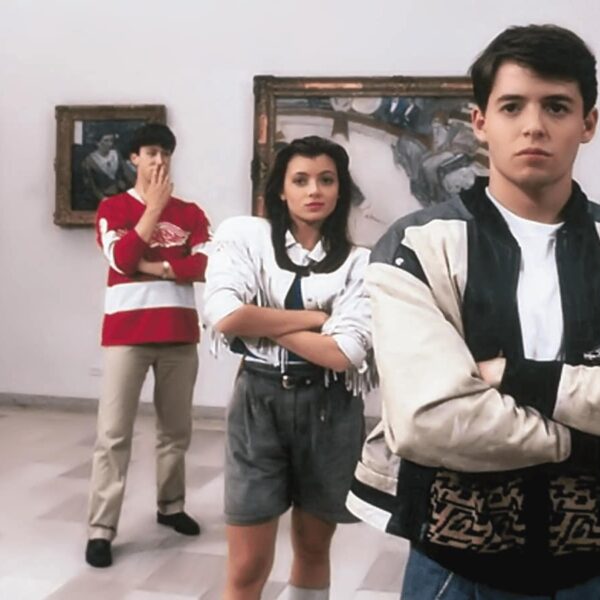
The Characteristics of Postmodernism

Website Codes and Conventions

Magazine Cover Analysis

Documentaries

Print Media Advertising

- Camera Shots
Thanks for reading!

Recently Added

Rule of Thirds

The Classification of Advertisements

Narrative Functions
Key concepts.
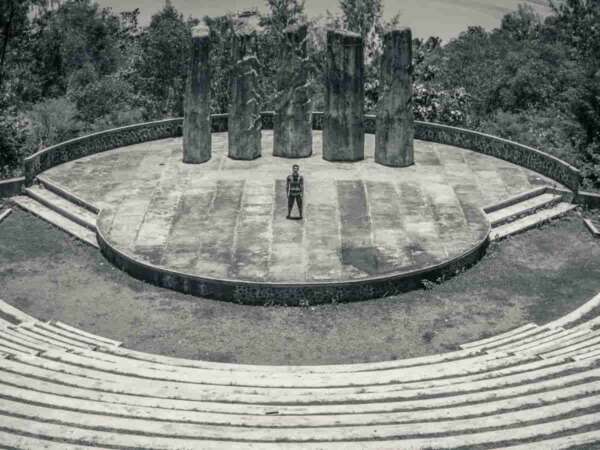
Classical Approaches to Narrative Structure

- Hypodermic Needle Theory
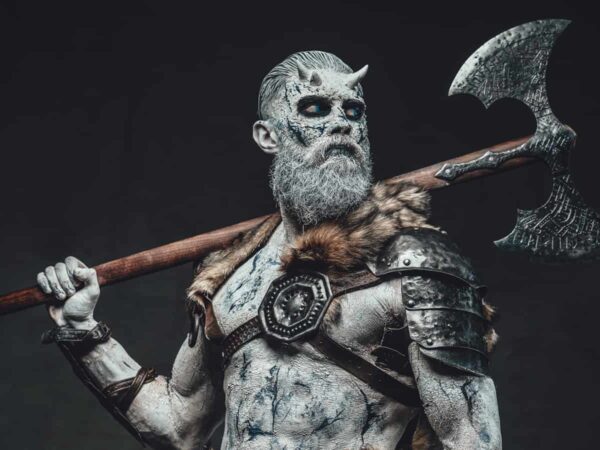
Media Studies
- The Study of Signs
- Ferdinand de Saussure and Signs
- Roland Barthes
- Charles Peirce’s Sign Categories
- Jean Baudrillard’s Simulacra and Simulation
- Binary Opposition
- Vladimir Propp
- Tzvetan Todorov
- Quest Plots
- Barthes’ 5 Narrative Codes
- Key Concepts in Genre
- David Gauntlett and Identity
- Paul Gilroy
- Liesbet van Zoonen
- The Male Gaze
- The Bechdel Test
- bell hooks and Intersectionality
- The Cultural Industries
- Two-Step Flow Theory
- Cultivation Theory
- Stuart Hall’s Reception Theory
- Abraham Maslow
- Uses and Gratifications
- Moral Panic
- Indicative Content
- Statement of Intent
- AQA A-Level
- Exam Practice
How to Analyse a Feature Article? (IBDP Paper 1)
Paper 1 in English appears challenging and nerve-wracking for students. It is without a doubt one of the most difficult papers for IBDP students. You have no idea what the questions are being asked. That is, after all, the challenge of this paper. The IB evaluates your ability to analyse a guided textual analysis and to write a commentary based on your findings.
What is a commentary?
It's a thorough breakdown of the visual text. The students must make inferences, analyse the picture, and interpret it. They should present their findings in the form of an essay.
What are the types of questions in Paper 1?
For IB English Literature SL and HL, Text A is always a poem and Text B is always a prose excerpt from a novel or short story.
For IB English Language and Literature SL, Text A and Text B can come from a broad variety of sources, including magazines, editorials, speeches, interview scripts, instruction manuals, cartoon strips, and more.
How to analyse a feature article?
The following objectives must be commented on while analysing a feature article. And they follow this order.
1. Context(s) Identify text is intended for online or print interest for people in that subject matter. Feature article is a result of lengthy research and editing. So all the information provided will be well investigated.
2. Purpose(s) The writer’s intent can be to inform the people about a person, place or phenomena.
3. Stylistic Device(s)
- The heading and subheading should be catchy, this can attract the attention and curiosity of the reader.
- In most of the cases there will be an image in the feature article. Comment on the image and the caption below the image usually it will be related to the topic or context.
- Notice the writer’s use of language and how he’s trying to convey his point through methods such as: sympathy, tone, emotive language etc.
- An introduction should hook or lead the reader. Lede can be used here, it is the opening sentence or paragraph, summarizing the most important aspects of the story.
- A body tells the story through combining facts, background research, personal discoveries, interviews etc. It is the main part of the article.
- A conclusion should leave an impression on the reader, by showing some enlargement of understanding that the writer has discovered through the investigation.
- You should comment on the figurative language, elements of narrative, imagery, direct and indirect speech if any.
Practice makes perfect , as the saying goes, and the more you practise writing and perfecting your essay, the better it will become. After you've completed the first analysis, go through it again and again until it's perfect. Then articulate the same in a coherent and effective way. Paper 1 requires more effort, it’s natural that you practice with more past papers.
Having trouble understanding these concepts? Do you want assistance from a subject matter expert? Here, at Vidyalai we help your child achieve the grade they aspire for. Our SMEs are trained and experienced tutors who will provide you with each and every help when required. We are just a click away. Request your first lesson now. . We guarantee 100% satisfaction on your first session, if you are not satisfied,the session will be absolutely free.

Key Tips for Successfully Analyzing Feature Articles in IBDP Paper 1
Home » Blog Microsite » Key Tips for Successfully Analyzing Feature Articles in IBDP Paper 1
1676 Reads Updated on: April 18, 2024
Updated on:
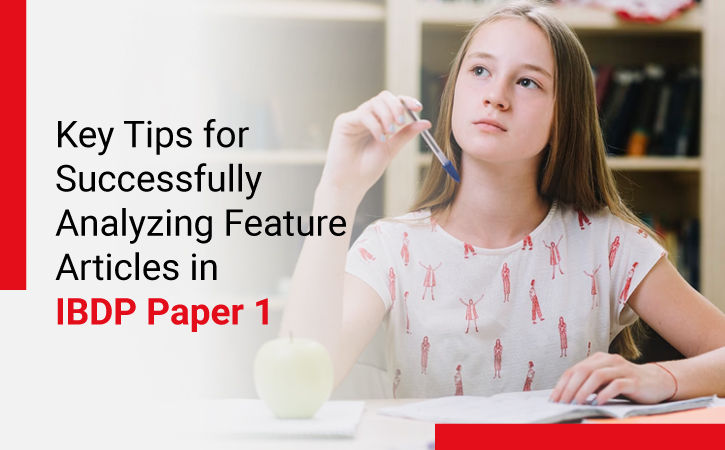
The International Baccalaureate Diploma Program (IBDP) is one of the four programs the International Baccalaureate offers. This program is recognized and appreciated by leading universities around the world and there is proof suggesting higher rates of DP students getting into universities and higher education studies compared to non-IB students. This program targets students in the age groups 16-19 years and is a rigorous, demanding yet rewarding program. The IB DP qualification not only provides academic excellence but also transforms the students to become socially conscious, enabling them to contribute to society even after they complete their education.
The IB Diploma Program covers two components – six subject groups and the three DP core elements.
DP Core – Theory of Knowledge (TOK), Extended Essay 9EE), and Creativity, Activity, Service (CAS)
Subject Groups – Language and Literature, Language Acquisition, Individuals and Societies, Sciences, Mathematics, and Arts.
Each subject in turn is offered at two levels considering the differing abilities of the students – Standard Level (SL) and Higher Level (HL).
Each student need to select different courses from the six subject groups – at least three from the Higher (HL), but not more than four, and remaining from the Standard Level (SL).
While the grading is measured similarly, the two levels- SL and HL, differ in learning scope, concepts taught, and subject understanding. HL subjects require a student to take 240 learning hours, while SL subjects, 150 teaching hours. Assessments are both internal and external. The DO Core can contribute up to 3 points toward the final Diploma score of the student. Grading for each subject is in the range 7 – 1, 7 being the highest and 1 the lowest.
As a part of the IB DP, students take at least one subject from the area of Language and Literature. Taking two languages from that area is one way of getting a bilingual Diploma. English Language and Literature are the most commonly taken courses.
Table of Contents
Aims and Objectives of the English Language
Aims of the course are to enable the students to
- Engage in a range of texts, in a variety of media and forms, from different periods, styles, and cultures
- Develop skills in the four language learning skills – Listening, speaking, reading, and writing
- Develop skills in interpretation, analysis, and evaluation
- Appreciate the connection between the studies in language and literature and other disciplines
- Collaborate and communicate in a confident and creative way
- Appreciate the formal and aesthetic qualities of texts and how they contribute to diverse responses and open up multiple meanings
Assessment Model
The English Literature focusses on the analysis of literary works and how authors convey their ideas, on the other hand English Language and Literature apart from literary works also covers non-literary works like advertisements, music lyrics or political propaganda.
Paper 1 of the study is the most difficult to prepare for though you can have practice in the style or format of writing, but the text you are going to analyze on the day of the examination is mysterious and unseen – you have never come across those texts. Unless you are lucky!! The IB evaluates your ability to write a guided textual analysis and write a commentary on your observing and findings.
Guided Literary Analysis for SL students –The text contains two unseen non-literary passages. Students need to choose one and write a guided analysis on it. A guided analysis refers to exploring of the passage supported by a guiding question One guiding question will be provided for each of the passage. And this questions can be used as point of entry into the text. Maximum marks for this paper is 20.
For the HL students, the format slightly varies as the students need to attempt both texts and write a guided literary analysis for each of them separately. The maximum marks allotted are 40 – 20 each for both texts.
For English Literature, (both SL and HL) texts are poems and prose excerpts from a novel or short story
For English Language and Literature SL, both the texts are from a broad variety of sources – manuals, magazines, cartoon strips, magazines, editorials, advertisements, interview scripts.
How to Analyze a Feature Article
Analysis aims at increasing the reader’s understanding of the given article’s thesis and content. The analysis of the article is subjective as it expresses the reader’s analysis, opinions, and ideas. Basically, analysis is nothing but breaking down and studying and thus evaluating the parts of the article. You need to identify what type of article is presented so that you bring out the right tone and format of your analysis report. Make sure to present the analysis in a way that your audience is able to understand without much difficulty.
When you read the article, decipher the author’s main points and thesis. Give yourself the right duration of time to read and gather your points. You can also make notes as you read. Most importantly look for the purpose the author has penned the article as there are various reasons, he might have had to write – inform, persuade, or entertain his reader. Depending on what is presented – the evidence, supporting statements/arguments, or the emotions – understand what exactly the purpose is.
Now start working on the outline of the analysis. Make sure to
- Avoid phrases like ‘I believe”, ‘In my opinion’ or ‘I think’ because you are presenting the author’s ideas in the analysis and not your ideas
- Start with a proper introduction as your reader needs to be aware of what to expect in the analysis
- Focus and present both the strengths and weaknesses of the author
- Use supportive facts/evidence to support your claims and presented ideas
- Weave in the facts, personal discoveries, your supporting statements for your claims to tell the story in the body section. This section is the essential part of your report where you showcase your analysis.
- Present the conclusion section that leaves an impression on your reader, by showing a greater understanding of what the author has discovered through the investigation
- You comment on the figurative language, elements of the narrative, imagery, and direct and indirect speech as presented in the article
Manya – The Princeton Review Advantage
Manya – The Princeton Review offers end-to-end study abroad services encompassing admissions consulting services , test preparation, English language training, career assessment, and international internship opportunities to study abroad aspirants. Founded in 2002, Manya holds an impeccable track record of enabling more than 4 lac students to accomplish their study abroad dreams through its network of 47+ centers across India.
Manya has formed long-lasting global alliances with several market leaders in the education industry in order to maximize the benefits of its large service portfolio. Their list of esteemed partners and affiliations includes – The Princeton Review (TPR), Cambridge University Press (CUP), Cogito Hub, British Council, Tuding to name a few. Manya has also forged 600+ partnerships with international universities across top study abroad destinations.
What is a feature article?
A feature article is a type of journalistic article that focuses on a particular topic, issue, or event. It is characterized by its in-depth reporting, and extensive research, and often includes personal perspectives and opinions.
What is IB DP paper 1?
IB DP paper 1 is an examination paper that assesses a student’s ability to analyze and interpret literary texts. It is a part of the International Baccalaureate Diploma Program (IBDP) and is taken by students in their final year of high school.
What is the format of IBDP Paper 1?
The format of IB DP Paper 1 includes a passage or passages from literary texts, followed by a series of questions that require students to analyze and interpret the text. Students are typically required to write a structured essay in response to the questions.
How do I analyze a feature article for IB DP Paper 1?
To analyze a feature article IB DP Paper 1, it is essential to identify the author’s purpose, audience, and tone. You should also consider the structure of the article, the use of language and literary devices, and the impact of the article on the reader.
What are the common literary devices used in a feature article?
Some common literary devices used in feature articles include imagery, symbolism, irony, foreshadowing, and metaphors. These devices can be used to convey meaning and add depth to the article.
Previous Blog
Related Blogs

Points to Know About Your Article Writing – IGCSE English
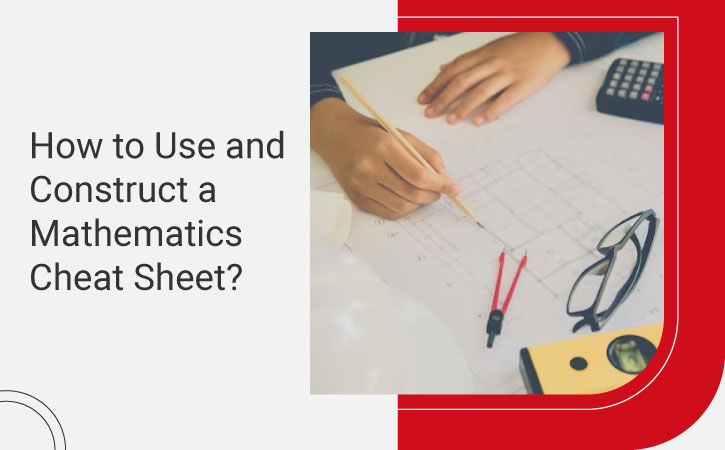
How to Use and Construct a Mathematics Cheat Sheet?
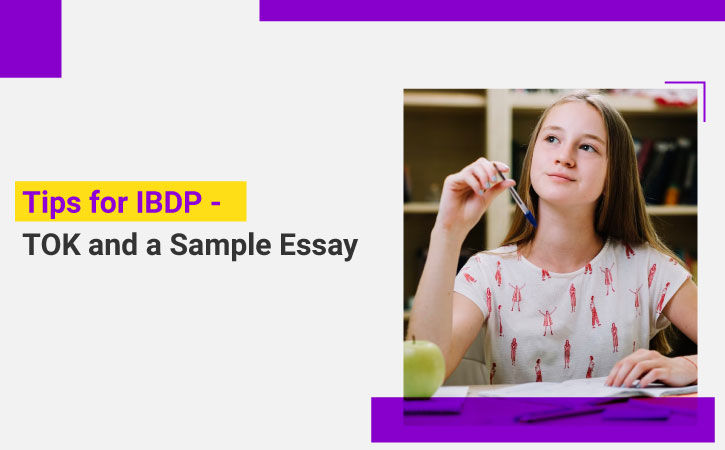
Tips for IBDP-TOK and a Sample Essay
Just One Step Away! Our Experts require more information to assist you in a better way.
Your privacy is important to us
Admissions Consulting Packages
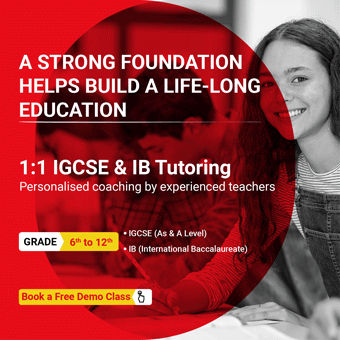
Trending Blogs
- Study abroad
- Study Abroad UK
- Study Abroad US
- Study Abroad Canada
- Study Abroad Australia
- Study Abroad Germany
- Study Abroad South Korea
- Study Abroad Spain
- Study Abroad Netherlands
- Study Abroad Switzerland
- Study Abroad Japan

Just One Step Away!
Our Experts require more information to assist you in a better way.
Testimonial
Download Form
Privacy overview.
Necessary cookies are absolutely essential for the website to function properly. This category only includes cookies that ensures basic functionalities and security features of the website. These cookies do not store any personal information.
Any cookies that may not be particularly necessary for the website to function and is used specifically to collect user personal data via analytics, ads, other embedded contents are termed as non-necessary cookies. It is mandatory to procure user consent prior to running these cookies on your website.
- Issue Archive
- Stay Connected

Interview: Ryûsuke Hamaguchi on Evil Does Not Exist

On Courtship

The Film Comment Podcast: Jeff Bridges Makes a Decision

Film Comment Recommends: Aida Returns
The film comment podcast: tribute to navroze contractor.

Heaven Can Wait
Current issue.
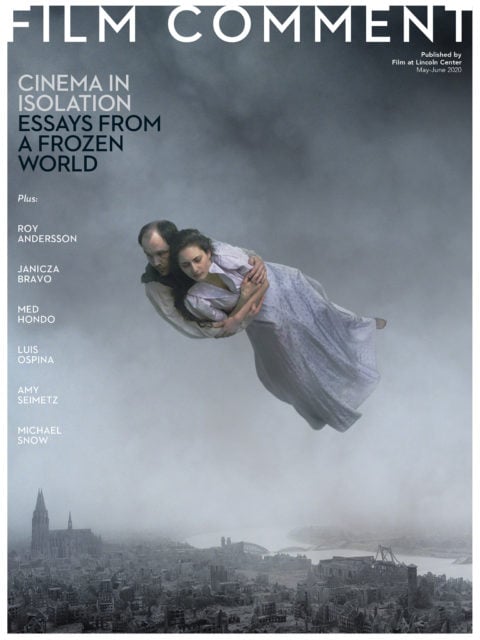
Streaming Behind Bars

Making Sense of Life: Open City Documentary Festival 2024
Film comment recommends.

Film Comment Recommends: Coconut Head Generation

Conceived in Liberty
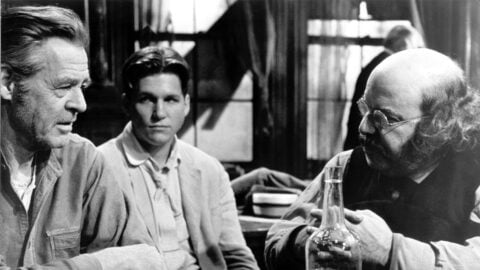
Jeff Bridges: The Wanderer
From the archive.

Interview: Bulle Ogier

Sign up for the Film Comment Letter!
Thoughtful, original film criticism delivered straight to your inbox each week. Enter your email address below to subscribe.
- Library Information
- Library Faculty and Staff
- Circulation Policies
- Library News
- Hours and Directions
- Floor Plan and Collections
- Upcoming and Past Events
- Room Use and Reservations
- Hackney Library Facts
- Mission Statement
- K.D. Kennedy, Jr. Rare Book Room
- Barton Patrons
- Print, Scan, Copy, Fax
- Print Quota
- Hardware and Software
- Interlibrary Loan
- Library Liaisons
- Center for Excellence in Teaching and Learning (CETL)
- Community Patrons
- Friends of Hackney Library
- IB Students
- Greenfield School Students
- AP Seminar Students
- Wilson County Public Library Patrons
- Barton College Alumni
- Library Catalog
- Journal Finder
- Additional Sources
- Quick Questions
- Streaming Videos
- Archives and Special Collections
- A-Z List - All Resources
- Subjects A-H
- Art and Design
- Criminology and Criminal Justice
- English/Spanish
- Exercise Science
- General/Reference
- Gerontology
- Health and Physical Education
- Health Promotion
- Subjects I-T and Courses
- Mass Communications
- Mathematics
- North Carolina
- Political Science
- Quantitative Literacy (QL)
- Religion/Philosophy
- Social Studies
- Social Work
- Sport Management
- Specific Classes
- Topics and Additional Guidance
- Career Exploration
- Citation Help
- Crossing the Tracks: An Oral History of East and West Wilson, North Carolina
- Current Events
- Finding Articles
- Finding Books and Films
- Improving Thinking Skills
- PubMed Database Tutorials
- Searching Tips and Tricks
- Starting your Research
- Women's History Month
- Test Preparation
- Database Tutorials
- Reference Help
- General Reference
- Common Questions
- Books/E-Books/Electronic Literature
- Nursing Test Help
- Teacher Licensure Test Help
- Chicago Manual of Style
Service Alert

Willis N. Hackney Library
IB: International Baccalaureate High School Students (Wilson County)
- Choosing the Best Information Sources
- Creating a Research Plan
- Book/e-Book Sources
- Magazine/Journal Articles
- Multi-Newspaper Databases and Web Sites
- Newspaper Archives/Historic Newspapers
- International & Foreign-Language Newspapers
- Business News
- North Carolina News
- Legal/Political News
- General Article Databases that Include Newspapers
- Specific Examples in MLA Style
- How to Find an Article Using Summon
- Journal Articles v. Magazine Articles--What's the Difference? A LibGuide page describing the differences between Journal and Magazine articles.
- How to Limit to Journal Articles
Tips for Evaluating Articles for Relevance
To determine the relevance of a particular article quickly, do the following:.
- Skim the abstract (summary) of the article to help determine relevance. (Hover over the hourglass icon in EBSCOhost databases to see it from the results list.)
- Skim the introduction and the conclusion sections of the article to help determine relevance. (Look at the full text of the article to see these sections.)
- Skim the subject headings used to describe the article to help determine relevance. (These are found in the results list and in the individual citation pages for each article.)
When to Use (and When NOT to Use) Magazines and Journal Articles
Magazine articles, do use a magazine article as your information source. . ..
- . . . if you're looking for current information on your topic
- . . . if you're looking for a quick overview of a complex topic
- . . . if you're looking for a short, easy-to-understand, jargon-free summary of your topic (magazine articles may vary in length from less than a page to up to about 5 or 6 pages)
DO NOT USE a magazine article as your information source. . .
- . . . if you're looking for current research by experts in the field on your topic
- . . . if you're looking for a broad, comprehensive treatment of your topic in great detail
Journal Articles
Do use a journal article as your information source. . ..
- . . . if you're focusing on a very narrow, in-depth aspect of your topic
DO NOT USE a journal article as your information source. . .
- . . . if you're looking for a short, easy-to-understand, jargon-free summary of your topic (journal articles can be quite lengthy, running anywhere from 10 to 100 pages)
Use Summon (One-Search) to Begin Searching Across Many Databases for "Scholarly Articles"
(Because of subscriber restrictions, these tools will require a Barton login for off campus access.)
You can start searching in one of two ways (and whichever way you choose, also limit to Full Text Online in the left sidebar):
- To begin your search across many databases for scholarly, peer-reviewed articles, do a "One-Search" search on the library's home page, and then click the "Peer-Review" option on the sidebar filter under "Full Text Online" on the left to limit to scholarly journal articles.
- Use the link to the One-Search Advanced Search below to search for scholarly (peer-reviewed) full-text journal articles directly using One-Search, and then check "Scholarly materials, including peer-reviewed" in the "Limit to" box:
(Please note that in addition to publishing research articles [the reports of research], scholarly, peer-reviewed journals sometimes publish other kinds of articles, such as book reviews, editorials, and short news stories. Research articles are usually distinguishable by a lengthy list of references at the end.)
- Summon Advanced Search This link takes you to the Summon (One-Search) advanced search page, where you can limit by full text, type of resource (scholarly materials, magazine, etc.), language, etc.
Search Current Multi-Subject Databases for Journal Articles
Search the following general databases individually for current articles published in academic journals on many different topics. ( You will need to limit to "peer reviewed," "scholarly," or "refereed" to find only journal articles in these databases, as they contain articles from other kinds of publications like newspapers and magazines.)
(Because of subscriber restrictions, these tools will require an IB Barton login for off campus access. )
- To limit to full-text articles, check the "full text" limit.
- See the "Journal Articles v. Magazine Articles..." link in the Tips box to the left for an explanation of the differences between Journal and Magazine articles..
Search Archival Multi-Subject Databases for Journal Articles
Search the following general databases individually for full-text archival (older) articles published in academic journals on many different topics (these databases do not contain current articles, they are always several years behind). You will not need to limit to "peer reviewed," "scholarly," or "refereed" to find only journal articles, because these databases contain only journal articles.
- See our Guide to the differences between Journal and Magazine articles.
- JSTOR (Archival: Arts & Sciences I, II, III, & IV Collections) This link opens in a new window These collections of full-text journals (from the first issue through an average of 3-5 years prior to the current issue--*recent issues are not available*) cover the following disciplines: art, archaeology, architecture, Asian studies, business, classics, economics, education, film studies, folklore, history, law, music, performing arts, political science, psychology, public policy and administration, sociology, and religion. There are over 174 journal titles in collection I, over 125 journal titles in collection II, over 150 journal titles in collection III, and over 110 journal titles in collection IV. From a common search screen, all collections may be searched simultaneously, from the full text of the articles to the title, author, abstract, caption, and publication dates, etc.
- Sage Journals This link opens in a new window Provides online access to the full text of 485 journals in Business, Humanities, Social Sciences, and Science, Technology and Medicine. Full-text coverage ends in 2012.
To Locate Subject Guides for Focused Searching on a Particular Subject or Discipline
To find discipline- or subject-specific article databases (among other things), click on the link below for a list of Subject Guides, then choose the subject (e.g., Psychology), and then click on the "Articles" link in the left sidebar. There, you will find suggested databases that are specific to that particular subject.
- Subject Guides A list of guides for various subjects taught at Barton
To Locate Databases by Subject, Title, Type, or Vendor
To search for resources by the discipline(s) they cover (e.g., Business, Education, History, Psychology, etc.), by type (books, e-books, magazine articles, primary sources, etc.), by the vendor who provides them (EBSCO, ProQuest, LexisNexis, etc.), or by title alphabetically (e.g., JSTOR, ERIC, ABI-INFORM, etc.), click on the following link:
- A-Z Database List A comprehensive alphabetical list of databases that patrons of Hackney Library have access to that can be filtered by resource type, vendor, and/or subject area.
Tips:
- Once your subject is chosen, the "recommended" database name(s) will appear in the yellow box. These are good to start with for that subject/discipline, and are accessible by clicking on the database name.
- All other resources associated with that subject will appear below the yellow box.
- To search by Resource Type, click on the drop-down menu in the "All Resource Types" box and select your choice(s) from the options listed there.
- To search by Vendors, click on the drop-down menu in the "All Vendors/Providers" box and select from the options listed there.
- Still need help? Try a Research Guide !
- Research Guidance A collection of research guides for subjects, some courses, or certain topics
- << Previous: Book/e-Book Sources
- Next: News and Newspaper Article Databases >>
- Last Updated: Feb 14, 2024 3:12 PM
- URL: https://barton.libguides.com/ib
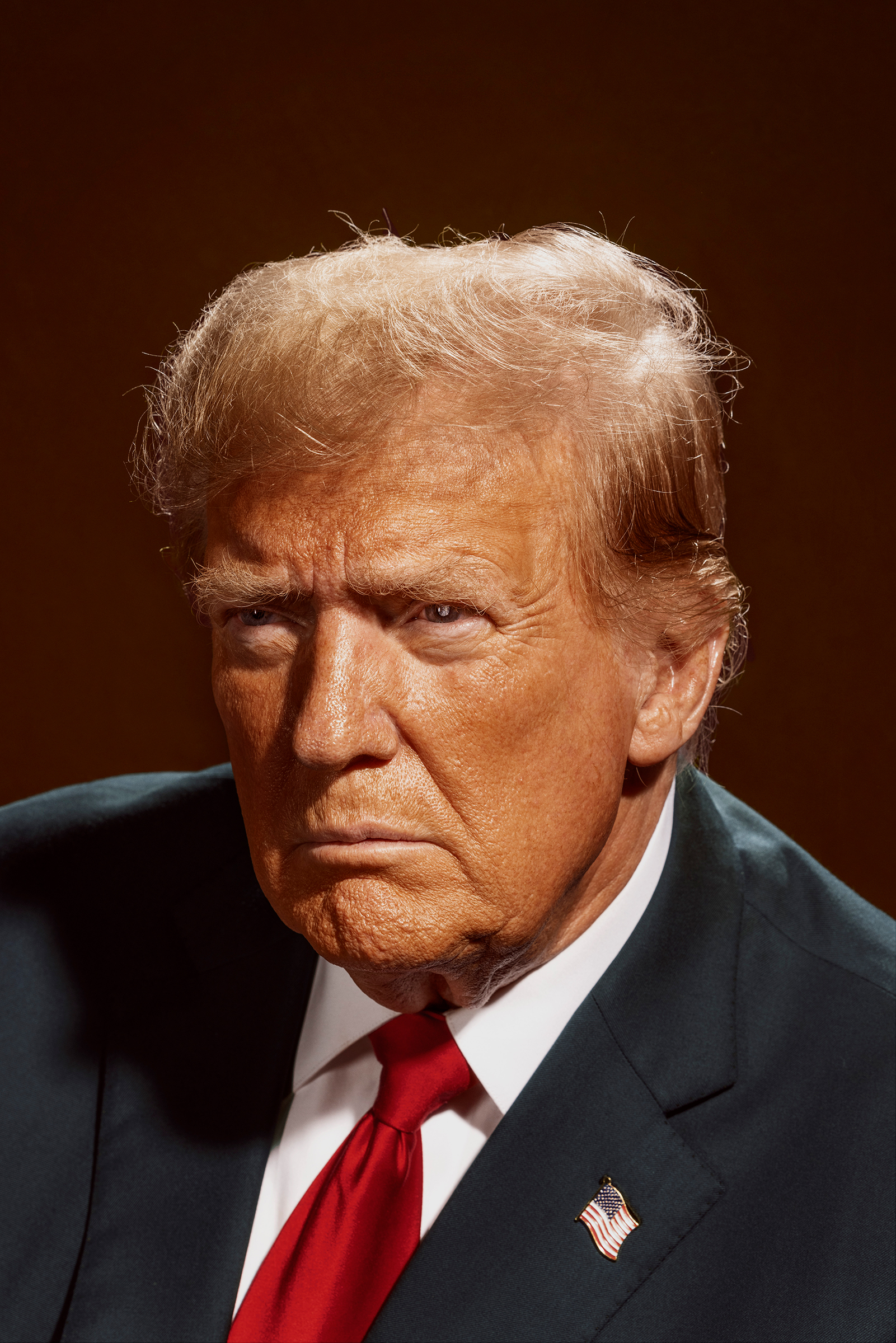
- How Far Trump Would Go
D onald Trump thinks he’s identified a crucial mistake of his first term: He was too nice.
We’ve been talking for more than an hour on April 12 at his fever-dream palace in Palm Beach. Aides lurk around the perimeter of a gilded dining room overlooking the manicured lawn. When one nudges me to wrap up the interview, I bring up the many former Cabinet officials who refuse to endorse Trump this time. Some have publicly warned that he poses a danger to the Republic. Why should voters trust you, I ask, when some of the people who observed you most closely do not?
As always, Trump punches back, denigrating his former top advisers. But beneath the typical torrent of invective, there is a larger lesson he has taken away. “I let them quit because I have a heart. I don’t want to embarrass anybody,” Trump says. “I don’t think I’ll do that again. From now on, I’ll fire.”
Six months from the 2024 presidential election, Trump is better positioned to win the White House than at any point in either of his previous campaigns. He leads Joe Biden by slim margins in most polls, including in several of the seven swing states likely to determine the outcome. But I had not come to ask about the election, the disgrace that followed the last one, or how he has become the first former—and perhaps future—American President to face a criminal trial . I wanted to know what Trump would do if he wins a second term, to hear his vision for the nation, in his own words.
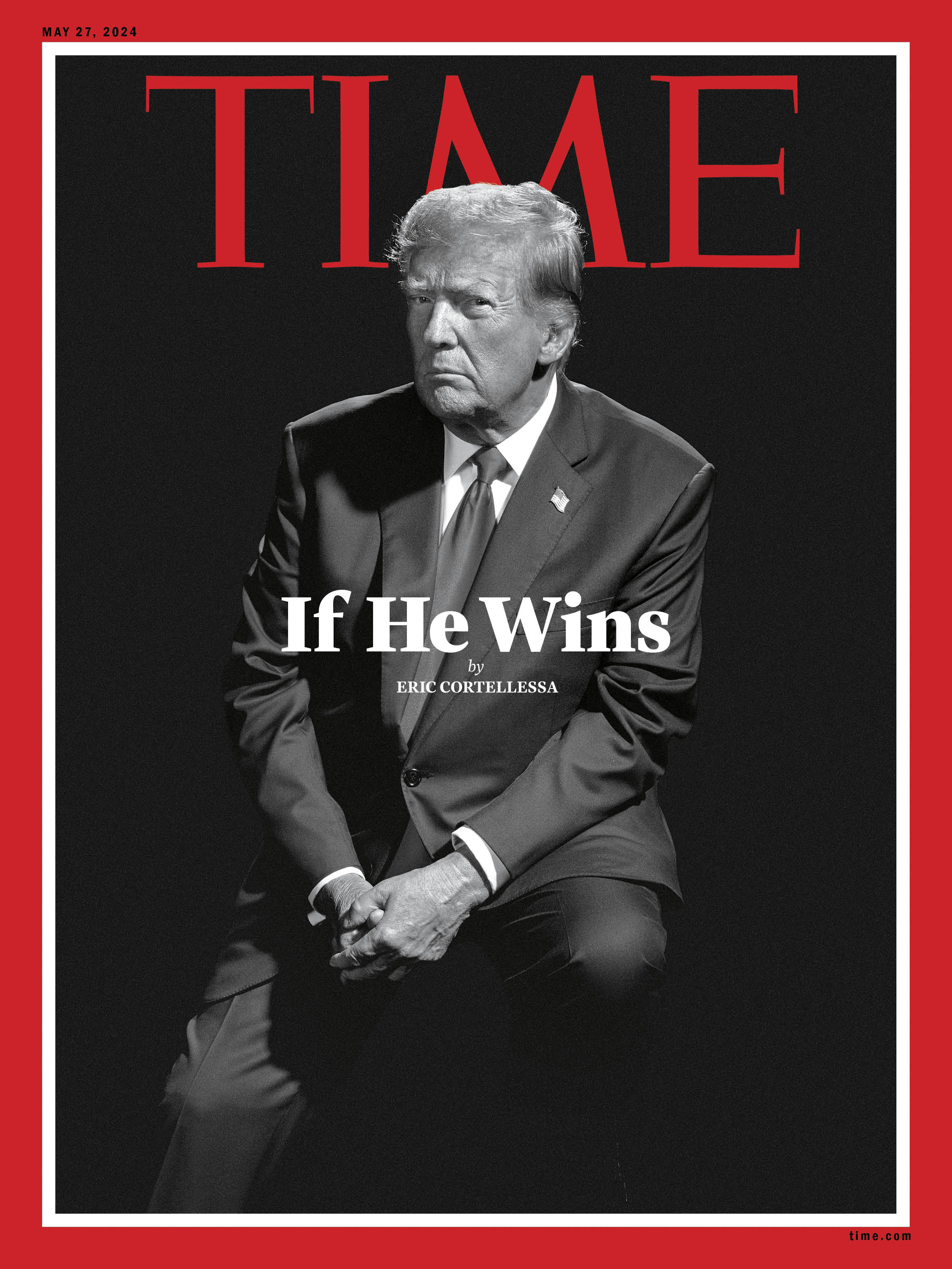
Buy your copy of this issue here
What emerged in two interviews with Trump , and conversations with more than a dozen of his closest advisers and confidants, were the outlines of an imperial presidency that would reshape America and its role in the world. To carry out a deportation operation designed to remove more than 11 million people from the country, Trump told me, he would be willing to build migrant detention camps and deploy the U.S. military, both at the border and inland. He would let red states monitor women’s pregnancies and prosecute those who violate abortion bans. He would, at his personal discretion, withhold funds appropriated by Congress, according to top advisers. He would be willing to fire a U.S. Attorney who doesn’t carry out his order to prosecute someone, breaking with a tradition of independent law enforcement that dates from America’s founding. He is weighing pardons for every one of his supporters accused of attacking the U.S. Capitol on Jan. 6, 2021, more than 800 of whom have pleaded guilty or been convicted by a jury. He might not come to the aid of an attacked ally in Europe or Asia if he felt that country wasn’t paying enough for its own defense. He would gut the U.S. civil service, deploy the National Guard to American cities as he sees fit, close the White House pandemic-preparedness office, and staff his Administration with acolytes who back his false assertion that the 2020 election was stolen.
Trump remains the same guy, with the same goals and grievances. But in person, if anything, he appears more assertive and confident. “When I first got to Washington, I knew very few people,” he says. “I had to rely on people.” Now he is in charge. The arranged marriage with the timorous Republican Party stalwarts is over; the old guard is vanquished, and the people who remain are his people. Trump would enter a second term backed by a slew of policy shops staffed by loyalists who have drawn up detailed plans in service of his agenda, which would concentrate the powers of the state in the hands of a man whose appetite for power appears all but insatiable. “I don’t think it’s a big mystery what his agenda would be,” says his close adviser Kellyanne Conway. “But I think people will be surprised at the alacrity with which he will take action.”

Read More: Read the Full Transcripts of Donald Trump's Interviews With TIME
The courts, the Constitution, and a Congress of unknown composition would all have a say in whether Trump’s objectives come to pass. The machinery of Washington has a range of defenses: leaks to a free press, whistle-blower protections, the oversight of inspectors general. The same deficiencies of temperament and judgment that hindered him in the past remain present. If he wins, Trump would be a lame duck—contrary to the suggestions of some supporters, he tells TIME he would not seek to overturn or ignore the Constitution’s prohibition on a third term. Public opinion would also be a powerful check. Amid a popular outcry, Trump was forced to scale back some of his most draconian first-term initiatives, including the policy of separating migrant families. As George Orwell wrote in 1945, the ability of governments to carry out their designs “depends on the general temper in the country.”
Every election is billed as a national turning point. This time that rings true. To supporters, the prospect of Trump 2.0, unconstrained and backed by a disciplined movement of true believers, offers revolutionary promise. To much of the rest of the nation and the world, it represents an alarming risk. A second Trump term could bring “the end of our democracy,” says presidential historian Douglas Brinkley, “and the birth of a new kind of authoritarian presidential order.”
Trump steps onto the patio at Mar-a-Lago near dusk. The well-heeled crowd eating Wagyu steaks and grilled branzino pauses to applaud as he takes his seat. On this gorgeous evening, the club is a MAGA mecca. Billionaire donor Steve Wynn is here. So is Speaker of the House Mike Johnson , who is dining with the former President after a joint press conference proposing legislation to prevent noncitizens from voting. Their voting in federal elections is already illegal, and extremely rare, but remains a Trumpian fixation that the embattled Speaker appeared happy to co-sign in exchange for the political cover that standing with Trump provides.
At the moment, though, Trump’s attention is elsewhere. With an index finger, he swipes through an iPad on the table to curate the restaurant’s soundtrack. The playlist veers from Sinead O’Connor to James Brown to The Phantom of the Opera. And there’s a uniquely Trump choice: a rendition of “The Star-Spangled Banner” sung by a choir of defendants imprisoned for attacking the U.S. Capitol on Jan. 6, interspersed with a recording of Trump reciting the Pledge of Allegiance. This has become a staple of his rallies, converting the ultimate symbol of national unity into a weapon of factional devotion.
The spectacle picks up where his first term left off. The events of Jan. 6 , during which a pro-Trump mob attacked the center of American democracy in an effort to subvert the peaceful transfer of power, was a profound stain on his legacy. Trump has sought to recast an insurrectionist riot as an act of patriotism. “I call them the J-6 patriots,” he says. When I ask whether he would consider pardoning every one of them, he says, “Yes, absolutely.” As Trump faces dozens of felony charges, including for election interference, conspiracy to defraud the United States, willful retention of national-security secrets, and falsifying business records to conceal hush-money payments, he has tried to turn legal peril into a badge of honor.
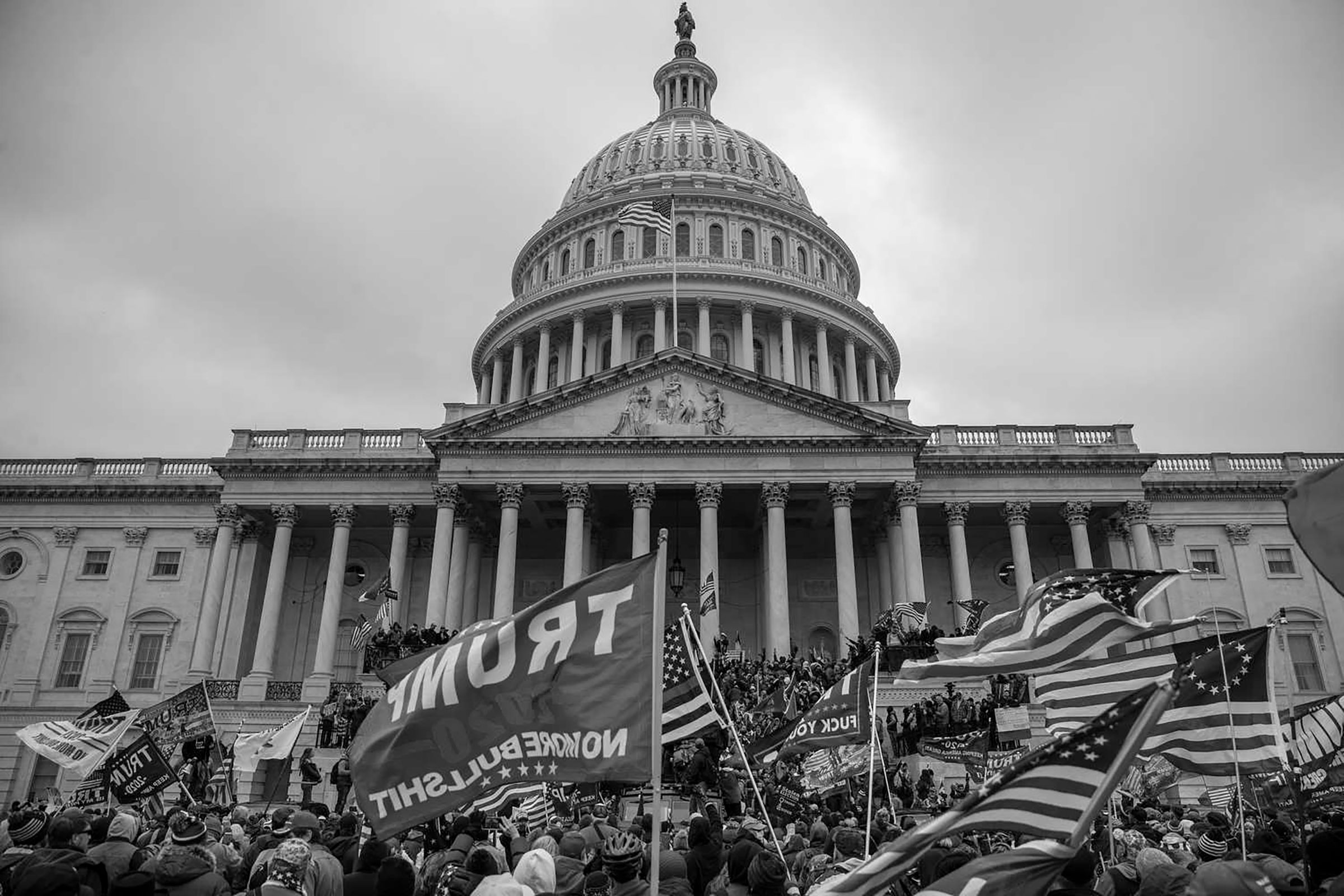
In a second term, Trump’s influence on American democracy would extend far beyond pardoning powers. Allies are laying the groundwork to restructure the presidency in line with a doctrine called the unitary executive theory, which holds that many of the constraints imposed on the White House by legislators and the courts should be swept away in favor of a more powerful Commander in Chief.
Read More: Fact-Checking What Donald Trump Said In His Interviews With TIME
Nowhere would that power be more momentous than at the Department of Justice. Since the nation’s earliest days, Presidents have generally kept a respectful distance from Senate-confirmed law-enforcement officials to avoid exploiting for personal ends their enormous ability to curtail Americans’ freedoms. But Trump, burned in his first term by multiple investigations directed by his own appointees, is ever more vocal about imposing his will directly on the department and its far-flung investigators and prosecutors.
In our Mar-a-Lago interview, Trump says he might fire U.S. Attorneys who refuse his orders to prosecute someone: “It would depend on the situation.” He’s told supporters he would seek retribution against his enemies in a second term. Would that include Fani Willis , the Atlanta-area district attorney who charged him with election interference, or Alvin Bragg, the Manhattan DA in the Stormy Daniels case, who Trump has previously said should be prosecuted? Trump demurs but offers no promises. “No, I don’t want to do that,” he says, before adding, “We’re gonna look at a lot of things. What they’ve done is a terrible thing.”
Trump has also vowed to appoint a “real special prosecutor” to go after Biden. “I wouldn’t want to hurt Biden,” he tells me. “I have too much respect for the office.” Seconds later, though, he suggests Biden’s fate may be tied to an upcoming Supreme Court ruling on whether Presidents can face criminal prosecution for acts committed in office. “If they said that a President doesn’t get immunity,” says Trump, “then Biden, I am sure, will be prosecuted for all of his crimes.” (Biden has not been charged with any, and a House Republican effort to impeach him has failed to unearth evidence of any crimes or misdemeanors, high or low.)
Read More: Trump Says ‘Anti-White Feeling’ Is a Problem in the U.S .
Such moves would be potentially catastrophic for the credibility of American law enforcement, scholars and former Justice Department leaders from both parties say. “If he ordered an improper prosecution, I would expect any respectable U.S. Attorney to say no,” says Michael McConnell, a former U.S. appellate judge appointed by President George W. Bush. “If the President fired the U.S. Attorney, it would be an enormous firestorm.” McConnell, now a Stanford law professor, says the dismissal could have a cascading effect similar to the Saturday Night Massacre , when President Richard Nixon ordered top DOJ officials to remove the special counsel investigating Watergate. Presidents have the constitutional right to fire U.S. Attorneys, and typically replace their predecessors’ appointees upon taking office. But discharging one specifically for refusing a President’s order would be all but unprecedented.

Trump’s radical designs for presidential power would be felt throughout the country. A main focus is the southern border. Trump says he plans to sign orders to reinstall many of the same policies from his first term, such as the Remain in Mexico program, which requires that non-Mexican asylum seekers be sent south of the border until their court dates, and Title 42 , which allows border officials to expel migrants without letting them apply for asylum. Advisers say he plans to cite record border crossings and fentanyl- and child-trafficking as justification for reimposing the emergency measures. He would direct federal funding to resume construction of the border wall, likely by allocating money from the military budget without congressional approval. The capstone of this program, advisers say, would be a massive deportation operation that would target millions of people. Trump made similar pledges in his first term, but says he plans to be more aggressive in a second. “People need to be deported,” says Tom Homan, a top Trump adviser and former acting head of Immigration and Customs Enforcement. “No one should be off the table.”
Read More: The Story Behind TIME's 'If He Wins' Trump Cover
For an operation of that scale, Trump says he would rely mostly on the National Guard to round up and remove undocumented migrants throughout the country. “If they weren’t able to, then I’d use [other parts of] the military,” he says. When I ask if that means he would override the Posse Comitatus Act—an 1878 law that prohibits the use of military force on civilians—Trump seems unmoved by the weight of the statute. “Well, these aren’t civilians,” he says. “These are people that aren’t legally in our country.” He would also seek help from local police and says he would deny funding for jurisdictions that decline to adopt his policies. “There’s a possibility that some won’t want to participate,” Trump says, “and they won’t partake in the riches.”
As President, Trump nominated three Supreme Court Justices who voted to overturn Roe v. Wade, and he claims credit for his role in ending a constitutional right to an abortion. At the same time, he has sought to defuse a potent campaign issue for the Democrats by saying he wouldn’t sign a federal ban. In our interview at Mar-a-Lago, he declines to commit to vetoing any additional federal restrictions if they came to his desk. More than 20 states now have full or partial abortion bans, and Trump says those policies should be left to the states to do what they want, including monitoring women’s pregnancies. “I think they might do that,” he says. When I ask whether he would be comfortable with states prosecuting women for having abortions beyond the point the laws permit, he says, “It’s irrelevant whether I’m comfortable or not. It’s totally irrelevant, because the states are going to make those decisions.” President Biden has said he would fight state anti-abortion measures in court and with regulation.
Trump’s allies don’t plan to be passive on abortion if he returns to power. The Heritage Foundation has called for enforcement of a 19th century statute that would outlaw the mailing of abortion pills. The Republican Study Committee (RSC), which includes more than 80% of the House GOP conference, included in its 2025 budget proposal the Life at Conception Act, which says the right to life extends to “the moment of fertilization.” I ask Trump if he would veto that bill if it came to his desk. “I don’t have to do anything about vetoes,” Trump says, “because we now have it back in the states.”
Presidents typically have a narrow window to pass major legislation. Trump’s team is eyeing two bills to kick off a second term: a border-security and immigration package, and an extension of his 2017 tax cuts. Many of the latter’s provisions expire early in 2025: the tax cuts on individual income brackets, 100% business expensing, the doubling of the estate-tax deduction. Trump is planning to intensify his protectionist agenda, telling me he’s considering a tariff of more than 10% on all imports, and perhaps even a 100% tariff on some Chinese goods. Trump says the tariffs will liberate the U.S. economy from being at the mercy of foreign manufacturing and spur an industrial renaissance in the U.S. When I point out that independent analysts estimate Trump’s first term tariffs on thousands of products, including steel and aluminum, solar panels, and washing machines, may have cost the U.S. $316 billion and more than 300,000 jobs, by one account, he dismisses these experts out of hand. His advisers argue that the average yearly inflation rate in his first term—under 2%—is evidence that his tariffs won’t raise prices.
Since leaving office, Trump has tried to engineer a caucus of the compliant, clearing primary fields in Senate and House races. His hope is that GOP majorities replete with MAGA diehards could rubber-stamp his legislative agenda and nominees. Representative Jim Banks of Indiana, a former RSC chairman and the GOP nominee for the state’s open Senate seat, recalls an August 2022 RSC planning meeting with Trump at his residence in Bedminster, N.J. As the group arrived, Banks recalls, news broke that Mar-a-Lago had been raided by the FBI. Banks was sure the meeting would be canceled. Moments later, Trump walked through the doors, defiant and pledging to run again. “I need allies there when I’m elected,” Banks recalls Trump saying. The difference in a second Trump term, Banks says now, “is he’s going to have the backup in Congress that he didn’t have before.”

Trump’s intention to remake America’s relations abroad may be just as consequential. Since its founding, the U.S. has sought to build and sustain alliances based on the shared values of political and economic freedom. Trump takes a much more transactional approach to international relations than his predecessors, expressing disdain for what he views as free-riding friends and appreciation for authoritarian leaders like President Xi Jinping of China, Prime Minister Viktor Orban of Hungary, or former President Jair Bolsonaro of Brazil.
That’s one reason America’s traditional allies were horrified when Trump recently said at a campaign rally that Russia could “do whatever the hell they want” to a NATO country he believes doesn’t spend enough on collective defense. That wasn’t idle bluster, Trump tells me. “If you’re not going to pay, then you’re on your own,” he says. Trump has long said the alliance is ripping the U.S. off. Former NATO Secretary-General Jens Stoltenberg credited Trump’s first-term threat to pull out of the alliance with spurring other members to add more than $100 billion to their defense budgets.
But an insecure NATO is as likely to accrue to Russia’s benefit as it is to America’s. President Vladimir Putin’s 2022 invasion of Ukraine looks to many in Europe and the U.S. like a test of his broader vision to reconstruct the Soviet empire. Under Biden and a bipartisan Congress, the U.S. has sent more than $100 billion to Ukraine to defend itself. It’s unlikely Trump would extend the same support to Kyiv. After Orban visited Mar-a-Lago in March, he said Trump “wouldn’t give a penny” to Ukraine. “I wouldn’t give unless Europe starts equalizing,” Trump hedges in our interview. “If Europe is not going to pay, why should we pay? They’re much more greatly affected. We have an ocean in between us. They don’t.” (E.U. nations have given more than $100 billion in aid to Ukraine as well.)
Trump has historically been reluctant to criticize or confront Putin. He sided with the Russian autocrat over his own intelligence community when it asserted that Russia interfered in the 2016 election. Even now, Trump uses Putin as a foil for his own political purposes. When I asked Trump why he has not called for the release of Wall Street Journal reporter Evan Gershkovich, who has been unjustly held on spurious charges in a Moscow prison for a year , Trump says, “I guess because I have so many other things I’m working on.” Gershkovich should be freed, he adds, but he doubts it will happen before the election. “The reporter should be released and he will be released,” Trump tells me. “I don’t know if he’s going to be released under Biden. I would get him released.”
America’s Asian allies, like its European ones, may be on their own under Trump. Taiwan’s Foreign Minister recently said aid to Ukraine was critical in deterring Xi from invading the island. Communist China’s leaders “have to understand that things like that can’t come easy,” Trump says, but he declines to say whether he would come to Taiwan’s defense.
Trump is less cryptic on current U.S. troop deployments in Asia. If South Korea doesn’t pay more to support U.S. troops there to deter Kim Jong Un’s increasingly belligerent regime to the north, Trump suggests the U.S. could withdraw its forces. “We have 40,000 troops that are in a precarious position,” he tells TIME. (The number is actually 28,500.) “Which doesn’t make any sense. Why would we defend somebody? And we’re talking about a very wealthy country.”
Transactional isolationism may be the main strain of Trump’s foreign policy, but there are limits. Trump says he would join Israel’s side in a confrontation with Iran. “If they attack Israel, yes, we would be there,” he tells me. He says he has come around to the now widespread belief in Israel that a Palestinian state existing side by side in peace is increasingly unlikely. “There was a time when I thought two-state could work,” he says. “Now I think two-state is going to be very, very tough.”
Yet even his support for Israel is not absolute. He’s criticized Israel’s handling of its war against Hamas, which has killed more than 30,000 Palestinians in Gaza, and has called for the nation to “get it over with.” When I ask whether he would consider withholding U.S. military aid to Israel to push it toward winding down the war, he doesn’t say yes, but he doesn’t rule it out, either. He is sharply critical of Israeli Prime Minister Benjamin Netanyahu, once a close ally. “I had a bad experience with Bibi,” Trump says. In his telling, a January 2020 U.S. operation to assassinate a top Iranian general was supposed to be a joint attack until Netanyahu backed out at the last moment. “That was something I never forgot,” he says. He blames Netanyahu for failing to prevent the Oct. 7 attack, when Hamas militants infiltrated southern Israel and killed nearly 1,200 people amid acts of brutality including burning entire families alive and raping women and girls. “It happened on his watch,” Trump says.
On the second day of Trump’s New York trial on April 17, I stand behind the packed counter of the Sanaa Convenience Store on 139th Street and Broadway, waiting for Trump to drop in for a postcourt campaign stop. He chose the bodega for its history. In 2022, one of the store’s clerks fatally stabbed a customer who attacked him. Bragg, the Manhattan DA, charged the clerk with second-degree murder. (The charges were later dropped amid public outrage over video footage that appeared to show the clerk acting in self-defense.) A baseball bat behind the counter alludes to lingering security concerns. When Trump arrives, he asks the store’s co-owner, Maad Ahmed, a Yemeni immigrant, about safety. “You should be allowed to have a gun,” Trump tells Ahmed. “If you had a gun, you’d never get robbed.”
On the campaign trail, Trump uses crime as a cudgel, painting urban America as a savage hell-scape even though violent crime has declined in recent years, with homicides sinking 6% in 2022 and 13% in 2023, according to the FBI. When I point this out, Trump tells me he thinks the data, which is collected by state and local police departments, is rigged. “It’s a lie,” he says. He has pledged to send the National Guard into cities struggling with crime in a second term—possibly without the request of governors—and plans to approve Justice Department grants only to cities that adopt his preferred policing methods like stop-and-frisk.
To critics, Trump’s preoccupation with crime is a racial dog whistle. In polls, large numbers of his supporters have expressed the view that antiwhite racism now represents a greater problem in the U.S. than the systemic racism that has long afflicted Black Americans. When I ask if he agrees, Trump does not dispute this position. “There is a definite antiwhite feeling in the country,” he tells TIME, “and that can’t be allowed either.” In a second term, advisers say, a Trump Administration would rescind Biden’s Executive Orders designed to boost diversity and racial equity.

Trump’s ability to campaign for the White House in the midst of an unprecedented criminal trial is the product of a more professional campaign operation that has avoided the infighting that plagued past versions. “He has a very disciplined team around him,” says Representative Elise Stefanik of New York. “That is an indicator of how disciplined and focused a second term will be.” That control now extends to the party writ large. In 2016, the GOP establishment, having failed to derail Trump’s campaign, surrounded him with staff who sought to temper him. Today the party’s permanent class have either devoted themselves to the gospel of MAGA or given up. Trump has cleaned house at the Republican National Committee, installing handpicked leaders—including his daughter-in-law—who have reportedly imposed loyalty tests on prospective job applicants, asking whether they believe the false assertion that the 2020 election was stolen. (The RNC has denied there is a litmus test.) Trump tells me he would have trouble hiring anyone who admits Biden won: “I wouldn’t feel good about it.”
Policy groups are creating a government-in-waiting full of true believers. The Heritage Foundation’s Project 2025 has drawn up plans for legislation and Executive Orders as it trains prospective personnel for a second Trump term. The Center for Renewing America, led by Russell Vought, Trump’s former director of the Office of Management and Budget, is dedicated to disempowering the so-called administrative state, the collection of bureaucrats with the power to control everything from drug-safety determinations to the contents of school lunches. The America First Policy Institute is a research haven of pro-Trump right-wing populists. America First Legal, led by Trump’s immigration adviser Stephen Miller, is mounting court battles against the Biden Administration.
The goal of these groups is to put Trump’s vision into action on day one. “The President never had a policy process that was designed to give him what he actually wanted and campaigned on,” says Vought. “[We are] sorting through the legal authorities, the mechanics, and providing the momentum for a future Administration.” That includes a litany of boundary-pushing right-wing policies, including slashing Department of Justice funding and cutting climate and environmental regulations.
Read More: Fact-Checking What Donald Trump Said in His 2024 Interviews With TIME
Trump’s campaign says he would be the final decision-maker on which policies suggested by these organizations would get implemented. But at the least, these advisers could form the front lines of a planned march against what Trump dubs the Deep State, marrying bureaucratic savvy to their leader’s anti-bureaucratic zeal. One weapon in Trump’s second-term “War on Washington” is a wonky one: restoring the power of impoundment, which allowed Presidents to withhold congressionally appropriated funds. Impoundment was a favorite maneuver of Nixon, who used his authority to freeze funding for subsidized housing and the Environmental Protection Agency. Trump and his allies plan to challenge a 1974 law that prohibits use of the measure, according to campaign policy advisers.
Another inside move is the enforcement of Schedule F, which allows the President to fire nonpolitical government officials and which Trump says he would embrace. “You have some people that are protected that shouldn’t be protected,” he says. A senior U.S. judge offers an example of how consequential such a move could be. Suppose there’s another pandemic, and President Trump wants to push the use of an untested drug, much as he did with hydroxychloroquine during COVID-19. Under Schedule F, if the drug’s medical reviewer at the Food and Drug Administration refuses to sign off on its use, Trump could fire them, and anyone else who doesn’t approve it. The Trump team says the President needs the power to hold bureaucrats accountable to voters. “The mere mention of Schedule F,” says Vought, “ensures that the bureaucracy moves in your direction.”
It can be hard at times to discern Trump’s true intentions. In his interviews with TIME, he often sidestepped questions or answered them in contradictory ways. There’s no telling how his ego and self-destructive behavior might hinder his objectives. And for all his norm-breaking, there are lines he says he won’t cross. When asked if he would comply with all orders upheld by the Supreme Court, Trump says he would.
But his policy preoccupations are clear and consistent. If Trump is able to carry out a fraction of his goals, the impact could prove as transformative as any presidency in more than a century. “He’s in full war mode,” says his former adviser and occasional confidant Stephen Bannon. Trump’s sense of the state of the country is “quite apocalyptic,” Bannon says. “That’s where Trump’s heart is. That’s where his obsession is.”
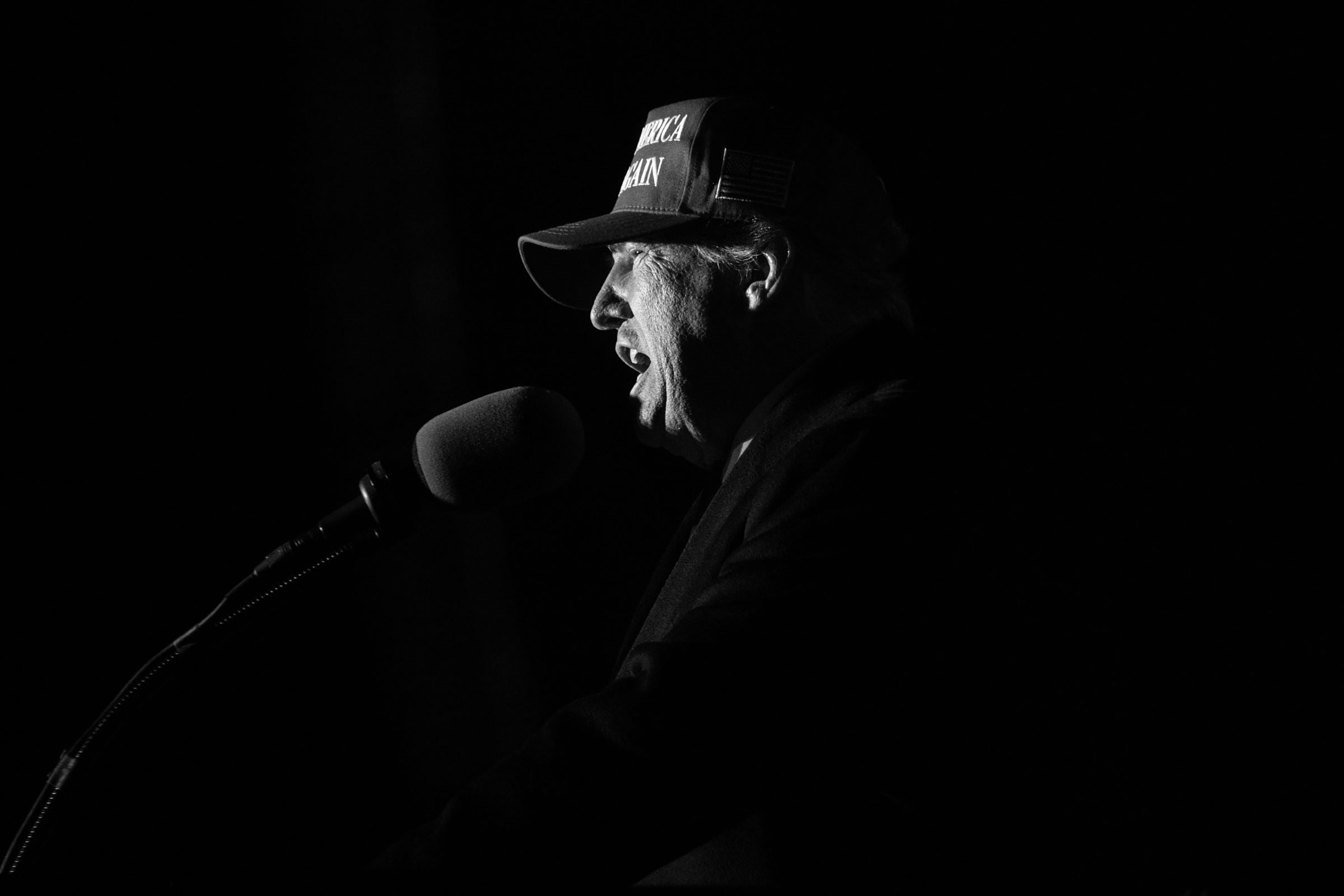
These obsessions could once again push the nation to the brink of crisis. Trump does not dismiss the possibility of political violence around the election. “If we don’t win, you know, it depends,” he tells TIME. “It always depends on the fairness of the election.” When I ask what he meant when he baselessly claimed on Truth Social that a stolen election “allows for the termination of all rules, regulations and articles, even those found in the Constitution,” Trump responded by denying he had said it. He then complained about the “Biden-inspired” court case he faces in New York and suggested that the “fascists” in America’s government were its greatest threat. “I think the enemy from within, in many cases, is much more dangerous for our country than the outside enemies of China, Russia, and various others,” he tells me.
Toward the end of our conversation at Mar-a-Lago, I ask Trump to explain another troubling comment he made: that he wants to be dictator for a day. It came during a Fox News town hall with Sean Hannity, who gave Trump an opportunity to allay concerns that he would abuse power in office or seek retribution against political opponents. Trump said he would not be a dictator—“except for day one,” he added. “I want to close the border, and I want to drill, drill, drill.”
Trump says that the remark “was said in fun, in jest, sarcastically.” He compares it to an infamous moment from the 2016 campaign, when he encouraged the Russians to hack and leak Hillary Clinton’s emails. In Trump’s mind, the media sensationalized those remarks too. But the Russians weren’t joking: among many other efforts to influence the core exercise of American democracy that year, they hacked the Democratic National Committee’s servers and disseminated its emails through WikiLeaks.
Whether or not he was kidding about bringing a tyrannical end to our 248-year experiment in democracy, I ask him, Don’t you see why many Americans see such talk of dictatorship as contrary to our most cherished principles? Trump says no. Quite the opposite, he insists. “I think a lot of people like it.” — With reporting by Leslie Dickstein, Simmone Shah, and Julia Zorthian
More Must-Reads From TIME
- What Student Photojournalists Saw at the Campus Protests
- Women Say They Were Pressured Into Long-Term Birth Control
- Scientists Are Finding Out Just How Toxic Your Stuff Is
- Boredom Makes Us Human
- John Mulaney Has What Late Night Needs
- The 100 Most Influential People of 2024
- Want Weekly Recs on What to Watch, Read, and More? Sign Up for Worth Your Time
Contact us at [email protected]
Advertisement
This week's magazine
11 may 2024, on the cover, editor's picks, environment, is climate change accelerating after a record year of heat.
Subscriber-only
It's time to clean up 'forever chemicals' and companies should pay
Who were the enigmatic sea peoples blamed for the bronze age collapse, the 'forever chemicals' toxic to your health - and how to avoid them, why we are finally within reach of a room-temperature superconductor, table of contents, it's time to clean up 'forever chemicals' and companies should pay, european summers will be hotter than predicted because of cleaner air, indoor climbing wall users may be breathing in toxic rubber dust, flies undertake epic migrations that may be vital for pollination, most brain monitors sold to consumers don't keep your data private, we now know exactly how thick the boundary between water and air is, mmr vaccines may not always give lifelong immunity against measles, protocells on early earth may have been formed by squeezing geysers, odd bump on praying mantis chest is actually world’s weirdest tongue, running around a 'wall of death' could keep moon settlers fit, father's gut microbiome may affect infant health, being angry for just 8 minutes could increase risk of a heart attack, gps jamming traced to russia after flights over europe suspended, mysterious space signals may come from a dead star with a planet, black holes scramble information – but may not be the best at it, politicians can use social media ads to buy votes for €4 per person, red squirrels were hosts for leprosy in medieval england, orangutan is first non-human seen treating wounds with medicinal plant, rising temperatures are cooking bumblebee nests and killing larvae, china is sending its chang’e 6 spacecraft to the far side of the moon, how schrödinger's cat could make quantum computers work better, lack of us bird flu tracking in cows may raise risk of human infection, why criticisms of the proposed anthropocene epoch miss the point, why carbon offsetting your flight isn't the answer, astonishing images show how female neanderthal may have looked, the 'forever chemicals' toxic to your health - and how to avoid them, why eggs should be front and centre in the story of evolution, the hunt for alien planets and extraterrestrial life, new scientist recommends child, a podcast on our first stages of life, sarah perry's enlightenment is a moving story of love and astronomy, twisteddoodles on hacking your gut microbiome, how science can help you whip up perfect egg whites for your bakes, braintwister #19: angular arrangements, tom gauld on used numbers, how the discovery of a nest in a roman museum caused a kerfuffle, the last word, browse past issues.
27 April 2024
20 April 2024
13 April 2024
6 April 2024
30 March 2024
- Skip to content
- Accessibility Policy
- Oracle blogs
- Lorem ipsum dolor
Written by the Java community for Java and JVM developers
Sentiment analysis in Java: Analyzing multisentence text blocks

One sentence is positive. One sentence is negative. What’s the sentiment of the entire text block?
Download a PDF of this article
Sentiment analysis tells you if text conveys a positive, negative, or neutral message. When applied to a stream of social media messages from an account or a hashtag, for example, you can determine whether sentiment is overall favorable or unfavorable. If you examine sentiments over time, you can analyze them for trends or attempt to correlate them against external data. Based on this analysis, you could then build predictive models.
This is the second article in a series on performing sentiment analysis in Java by using the sentiment tool integrated into Stanford CoreNLP , an open source library for natural language processing (NLP).
In the first article, “ Perform textual sentiment analysis in Java using a deep learning model ,” you learned how to use this tool to determine the sentiment of a sentence from very negative to very positive. In practice, however, you might often need to look at a single aggregate sentiment score for the entire text block, rather than having a set of sentence-level sentiment scores.
Here, I will describe some approaches you can use to perform analysis on an arbitrarily sized text block, building on the Java code presented in the first article.
Scoring a multisentence text block
When you need to deal with a long, multisentence text block (such as a tweet, an email, or a product review), you might naturally want to have a single sentiment score for the entire text block rather than merely receiving a list of sentiment scores for separate sentences.
One simple solution is to calculate the average sentiment score for the entire text block by adding the sentiment scores of separate sentences and dividing by the number of sentences.
However, this approach is not perfect in most cases since different sentences within a text block can affect the overall sentiment differently. In other words, different sentences within a block may have varying degrees of importance when you calculate the overall sentiment.
There is no single algorithm for identifying the most-important sentences that would work equally well for all types of texts; perhaps that is why Stanford CoreNLP does not provide a built-in option for identifying the overall sentiment of a multisentence text block.
Fortunately, you can manually code such functionality to work best for the type of text you are dealing with. For example, text samples of the same type usually have something in common when it comes to identifying the most-important sentences.
Imagine you’re dealing with product reviews. The most-important statements—from the standpoint of the overall review sentiment—typically can be found at the beginning or the end of the review. The first statement usually expresses the main idea of the review, and the last one summarizes it. While this may not be true for every review, a significant portion of them look exactly like that. Here is an example.
I would recommend this book for anyone who wants an introduction to natural language processing. Just finished the book and followed the code all way. I tried the code from the resource website. I like how it is organized. Well done.
The Stanford CoreNLP sentiment classifier would identify the above sentences as follows:
As you can see, the first and the last sentences suggest that the review is positive. Overall, however, the number of neutral sentences in the review outnumber the positive statements, which means that an arithmetic linear average, where you give the same weight to each sentence, does not seem to be a proper way to calculate the overall sentiment of the review. Instead, you might want to calculate it with more weight assigned to the first and the last sentences, as implemented in the example discussed below.
The weighted-average approach
Continuing with the sample Java program introduced in the first article, add the following getReviewSentiment() method to the nlpPipeline class, as follows:
The getReviewSentiment() method shown above illustrates how to calculate the overall sentiment of a review using two approaches, calculating both a weighted average and the linear average for comparison purposes.
The method takes the text of a review as the first parameter. As the second, you pass a weighting factor to apply to the first and the last sentences when calculating the overall review sentiment. The weighting factor is passed in as a real number in the range [0, 1] . To apply the scale to fit a particular review, you recalculate the weighting factor by multiplying the passed value by the number of sentences in the review, thus calculating the adapted weighting factor.
To test the getReviewSentiment() method, use the following code:
This example passes in 0.4 as the weighting factor, but you should experiment with the value passed in. The higher this value, the more importance is given to the first and last sentences in the review.
To see this approach in action, recompile the nlpPipeline class and compile the newly created OverallReviewSentiment class. Then, run OverallReviewSentiment , as follows:
$ javac nlpPipeline.java $ javac OverallReviewSentiment.java $ java OverallReviewSentiment
This should produce the following results:
As you can see, the weighted average shows a more relevant estimate of the overall sentiment of the review than the linear average does.
Sequential increases in weight ratios
When it comes to storylike texts that cover a sequence of events spread over a time span, the importance of sentences—from the standpoint of the overall sentiment—often increases as the story goes. That is, the most important sentences in the sense of having the most influence on the overall sentiment conveyed by the story are typically found at the end, because they describe the most-recent episodes, conclusions, or experiences.
Consider the following tweet:
The weather in the morning was terrible. We decided to go to the cinema. Had a great time.
The sentence-level sentiment analysis of this story gives the following results:
Although the tweet begins with a negative remark, the overall sentiment here is clearly positive due to the final note about time well spent at the movies. This pattern also works for reviews where customers describe their experience with a product much like a story, as in the following example:
I love the stories from this publisher. They are always so enjoyable. But this one disappointed me.
Here is the sentiment analysis for it:
As you can see, more comments here are positive, but the entire block has an overall negative sentiment due to the final, disapproving remark. As in the previous example, this suggests that in a text block like this one, later sentences should be weighted more heavily than earlier ones.
For the ratio, you might use the index value of each sentence in the text, taking advantage of the fact that a later sentence has a greater index value. In other words, the importance increases proportionally to the index value of a sentence.
A matter of scale
Another important thing to decide is the scale you’re going to use for sentiment evaluation of each sentence, as the best solution may vary depending on the type of text blocks you’re dealing with.
To evaluate tweets, for example, you might want to employ all five levels of sentiment available with Stanford CoreNLP: very negative, negative, neutral, positive, and very positive.
When it comes to product review analysis, you might choose only two levels of sentiment—positive and negative—rounding all other options to one of these two. Since both the negative and the positive classes in Stanford CoreNLP are indexed with an odd number (1 and 3, respectively), you can tune the sentiment evaluation method discussed earlier to round the weighted average being calculated to its nearest odd integer.
To try this, you can add to the nlpPipeline class as follows:
Test the above method with the following code:
Recompile nlpPipeline and compile the newly created OverallStorySentiment class, and run OverallStorySentiment as follows:
$ javac nlpPipeline.java $ javac OverallStorySentiment.java $ java OverallStorySentiment
The result should look as follows:
Weighted average sentiment: 3.0
This test uses a single sample text to test the sentiment-determining method discussed here. For an example of how to perform such a test against a set of samples, refer back to the first article in this series.
This article looked at two methods of calculating the overall sentiment of a multisentence text block. Both methods assume different sentences within a text block can affect the overall sentiment differently.
- The first method determines the sentiment of customer reviews and is based on the observation that the most-significant comments in a product review are at the beginning and end.
- The second method calculates the overall sentiment by increasing the weight of each sentence as you move from the beginning to the end of the text. This method may work fine for storylike texts where the importance of sentences typically increases as the story progresses.
You can (and should) experiment with these and other methods to find the approach that best models the type of text in your business case.
The final article of this series will show how to train the Stanford CoreNLP sentiment tool with your own data to understand domain-specific phrases.
- Perform textual sentiment analysis in Java using a deep learning model
- Natural language processing at your fingertips with OCI Language
- How to program machine learning in Java with the Tribuo library
- Performing sentiment analysis using Oracle Text
Yuli Vasiliev
Yuli Vasiliev is a programmer, freelance author, and consultant currently specializing in open source development; Oracle database technologies; and, more recently, natural-language processing (NLP).
Previous Post
Synchronization in Java, Part 2: The synchronized keyword
Understanding the constant pool inside a java class file.
- Analyst Reports
- Cloud Economics
- Corporate Responsibility
- Diversity and Inclusion
- Security Practices
- What is Customer Service?
- What is ERP?
- What is Marketing Automation?
- What is Procurement?
- What is Talent Management?
- What is VM?
- Try Oracle Cloud Free Tier
- Oracle Sustainability
- Oracle COVID-19 Response
- Oracle and SailGP
- Oracle and Premier League
- Oracle and Red Bull Racing Honda
- US Sales 1.800.633.0738
- How can we help?
- Subscribe to Oracle Content
- © 2024 Oracle
- Privacy / Do Not Sell My Info
Analysis: Europe’s Youth Are Fueling the Far Right
Create an FP account to save articles to read later and in the FP mobile app.
ALREADY AN FP SUBSCRIBER? LOGIN
World Brief
- Editors’ Picks
- Africa Brief
China Brief
- Latin America Brief
South Asia Brief
Situation report.
- Flash Points
- War in Ukraine
- Israel and Hamas
- U.S.-China competition
- Biden's foreign policy
- Trade and economics
- Artificial intelligence
- Asia & the Pacific
- Middle East & Africa
Reimagining Globalization
Fareed zakaria on an age of revolutions, ones and tooze, foreign policy live.

Spring 2024 Issue
Print Archive
FP Analytics
- In-depth Special Reports
- Issue Briefs
- Power Maps and Interactive Microsites
- FP Simulations & PeaceGames
- Graphics Database
From Resistance to Resilience
The atlantic & pacific forum, redefining multilateralism, principles of humanity under pressure, fp global health forum 2024.
By submitting your email, you agree to the Privacy Policy and Terms of Use and to receive email correspondence from us. You may opt out at any time.
Your guide to the most important world stories of the day
Essential analysis of the stories shaping geopolitics on the continent
The latest news, analysis, and data from the country each week
Weekly update on what’s driving U.S. national security policy
Evening roundup with our editors’ favorite stories of the day
One-stop digest of politics, economics, and culture
Weekly update on developments in India and its neighbors
A curated selection of our very best long reads
Europe’s Youth Are Fueling the Far Right
The continent’s radicals are increasingly attractive far beyond their traditional pool of voters..
Evidence is mounting that Europe’s far right will score better than ever before in the upcoming European Parliament elections on June 6 to June 9—and that the continent’s young voters will fuel its ascent. The young adults now gravitating to far right aren’t Nazis or xenophobic racists, but they may have a hand in an outcome that will, at the very least, shift the European Union’s priorities and accents to the right. A particularly solid right-wing finish—and cooperation across the hard-right spectrum—could rattle EU unity and throw a wrench into the bloc’s workings at a time when it is confronting acute crises on several fronts, not least the war in Ukraine.
Since new laws mean that even people under 18 will be eligible to vote in some countries—16-year-olds in Austria, Germany, Malta, and Belgium, and 17-year-olds in Greece—there had been hope that these new voters would put a brake on the populist surge engulfing Europe. The idea behind giving 16- and 17-year-olds the vote was partly based on their long-term investment in politics. The policies designed today will affect them for many decades, in contrast to their grandparents.
And in the 2019 European Parliament election, young voters showed great promise by turning out in record numbers , a hopeful sign that reflected their enthusiasm for the common European project. With the climate movement rocking the streets, their votes went disproportionately to green parties that championed strong climate protection and deeper EU integration—two sets of long-term interests. This landed green representatives from Portugal to Latvia in the Brussels parliament and prompted the EU administration to approve the European Green Deal in 2020.
But the democratic exuberance of voters in their late teens, 20s, and early 30s could boost a very different trend this June, as growing numbers of younger voters are siding with far-right populist parties—the very ones that want to scupper the Green Deal and rein in the EU. In recent national votes conducted in Portugal, Sweden , the Netherlands, Italy , Finland , and France , young people voted in unprecedented numbers for extreme nationalist and euroskeptic parties. (Though some observers have argued that reporting about these trends is incomplete or oversimplified .) And surveys in Germany show the youth vote becoming ever more sympathetic to the Alternative for Germany (AfD), a far-right party that has undergone a radicalization that makes it among Europe’s fiercest , hard-right electoral parties.
“There’s no doubt that these parties have been making inroads to younger voters,” said Catherine de Vries, a Dutch political scientist. “The parties don’t look so extreme anymore, as they’ve been around for a while now. And young people think that the mainstream parties have had their chance. The system still doesn’t work for them, so let the other guys have a try.”
A German study published this year by a team led by youth researcher Simon Schnetzer showed that a full 22 percent of the young people (in this case, ages 14 through 29) surveyed would vote for the AfD if German elections were held today—twice as many as just two years ago. The tally for the Green Party fell by a third during that time frame. A full quarter of those asked said they weren’t sure who’d they vote for—another all-time high result.
The grounds for the pronounced shift are vague: Researchers tend to cite a general unhappiness with the post-pandemic economic and political conditions. “It seems as if the coronavirus pandemic left [young people] irritated about our ability to cope with the future, which is reflected in deep insecurity,” wrote the study’s authors. The issues described by participants that most impact this insecurity included their personal finances, professional opportunities, the health sector, and social recognition. They expressed less concern about the climate crisis and more about inflation, the economy, and old-age poverty.
“We can speak of a clear shift to the right in the young population,” said Klaus Hurrelmann, one of the study’s authors and a professor at the Hertie School in Berlin. The AfD’s foremost campaign priority of stopping immigration and refugee relief plainly struck a chord: Compared to a separate study conducted five years ago , about half as many (26 percent) of the young participants (26 percent) in the 2024 study said they were not in favor of taking in refugees. But just as important as the content of immigration policies, the authors underlined, was the idea that young people feel unheard or involved in the political process.
The change in sympathy in many young Germans reflects survey results, elections, and the statements of other young people across Europe. In the Netherlands’ elections last year, the most popular party among people under 35 (at 17 percent ) was the Party for Freedom, led by Geert Wilders, a far-right populist with a long record of EU-trashing.
The explanation provided by many Dutch experts: It’s all about bestaanszekerheid , a Dutch word translated as “livelihood security.” This refers to having a decent and regular income, a comfortable home, access to education and health care, and a buffer against unexpected problems, de Vries told the Guardian . Young peoples’ leading concerns in the Netherlands are housing, overcrowded classes, and struggling hospitals, she said, which Wilders addressed in his campaign.
In Portugal’s March legislative elections, the far-right Chega party, which prioritized courting young people, raked in more of their votes than any other party. The meaning of chega , which can be translated as “that’s enough,” accurately describes many young voters’ motive for supporting it. Their gripes: “a very low average wage and an economy that cannot absorb educated young people,” according to political scientist António Costa Pinto in an interview with Euronews
“In the past, right-wing sympathizers accused immigrants of taking their jobs,” said Eberhard Seidel, the managing director of a Berlin-based nongovernmental organization called Schools Without Racism. “Now there are enough jobs but not enough housing for people who work. They still have to live with their parents.”
Observers say that the far right has excelled at grabbing the youth’s attention, not least with the social media platform TikTok. The recent German study found that 57 percent of young people imbibe their news and politics through social media. More than 90 percent use messaging service WhatsApp, followed by Instagram (80 percent) and YouTube (77 percent). TikTok stands at 51 percent; more than half of all 14- to 29-year-olds now use the app regularly, compared to 44 percent last year. The epiphany prompted an immediate response from German Health Minister Karl Lauterbach, who on declared in his first video on the platform, posted on March 19: “Revolution on TikTok: It starts today.”
Other opinion surveys show that young voters are diverse, divided, and undecided. A YouGov poll conducted in August 2023 showed that young Europeans are overwhelmingly concerned about the climate crisis and its likely effects, and more willing than older people to change behavior to mitigate those effects. Another poll , conducted in Germany, showed human rights violations at the top of younger people’s lists, followed by climate change, sexual harassment, and child abuse.
Younger voters still aren’t the drivers of xenophobia in the way that their parents’ generation was, Seidel said. A vote for the AfD doesn’t necessarily mean that they favor expelling immigrants from Germany or exiting the EU. “They take the basics of democracy and the social system for granted,” he said. “And they’re not fully aware of the implications of a rightward lurch in their political systems.”
Neither were Brexit’s voters, Seidel noted. And they found out the hard way.
Paul Hockenos is a Berlin-based journalist. His recent book is Berlin Calling: A Story of Anarchy, Music, the Wall and the Birth of the New Berlin (The New Press).
Join the Conversation
Commenting on this and other recent articles is just one benefit of a Foreign Policy subscription.
Already a subscriber? Log In .
Subscribe Subscribe
View Comments
Join the conversation on this and other recent Foreign Policy articles when you subscribe now.
Not your account? Log out
Please follow our comment guidelines , stay on topic, and be civil, courteous, and respectful of others’ beliefs.
Change your username:
I agree to abide by FP’s comment guidelines . (Required)
Confirm your username to get started.
The default username below has been generated using the first name and last initial on your FP subscriber account. Usernames may be updated at any time and must not contain inappropriate or offensive language.
Europe Could Soon Be Hooked on Fentanyl
The continent invented the drug but has been spared its worst ravages—until now.
Sign up for Editors' Picks
A curated selection of fp’s must-read stories..
You’re on the list! More ways to stay updated on global news:
The United States Has a Keen Demographic Edge
Who is russia’s new defense minister, after al jazeera, will israel target its own media, peru learns to read the fine print in china deals, editors’ picks.
- 1 China and the U.S. Are Numb to the Real Risk of War
- 2 Peru Learns to Read the Fine Print in China Deals
- 3 The United States Has a Keen Demographic Edge
- 4 Who Is Russia’s New Defense Minister?
- 5 The West Is Still Oblivious to Russia’s Information War
America Has a Demographic Edge Over Russia and China
Who is andrei belousov, russia's new defense minister, after shutting al jazeera, will israel target its own media, peru's china port deal blunder is a warning for others, more from foreign policy, saudi arabia is on the way to becoming the next egypt.
Washington is brokering a diplomatic deal that could deeply distort its relationship with Riyadh.
What America’s Palestine Protesters Should and Shouldn’t Do
A how-to guide for university students from a sympathetic observer.
No, This Is Not a Cold War—Yet
Why are China hawks exaggerating the threat from Beijing?
The Original Sin of Biden’s Foreign Policy
All of the administration’s diplomatic weaknesses were already visible in the withdrawal from Afghanistan.
China and the U.S. Are Numb to the Real Risk of War
The west is still oblivious to russia’s information war, uncle sam wants you to join the mining industry.
Sign up for World Brief
FP’s flagship evening newsletter guiding you through the most important world stories of the day, written by Alexandra Sharp . Delivered weekdays.
Stormy Daniels testifies she had sex with Trump, defense attacks her credibility
- Medium Text
'ONLY WAY YOU'RE GETTING OUT OF THE TRAILER PARK'
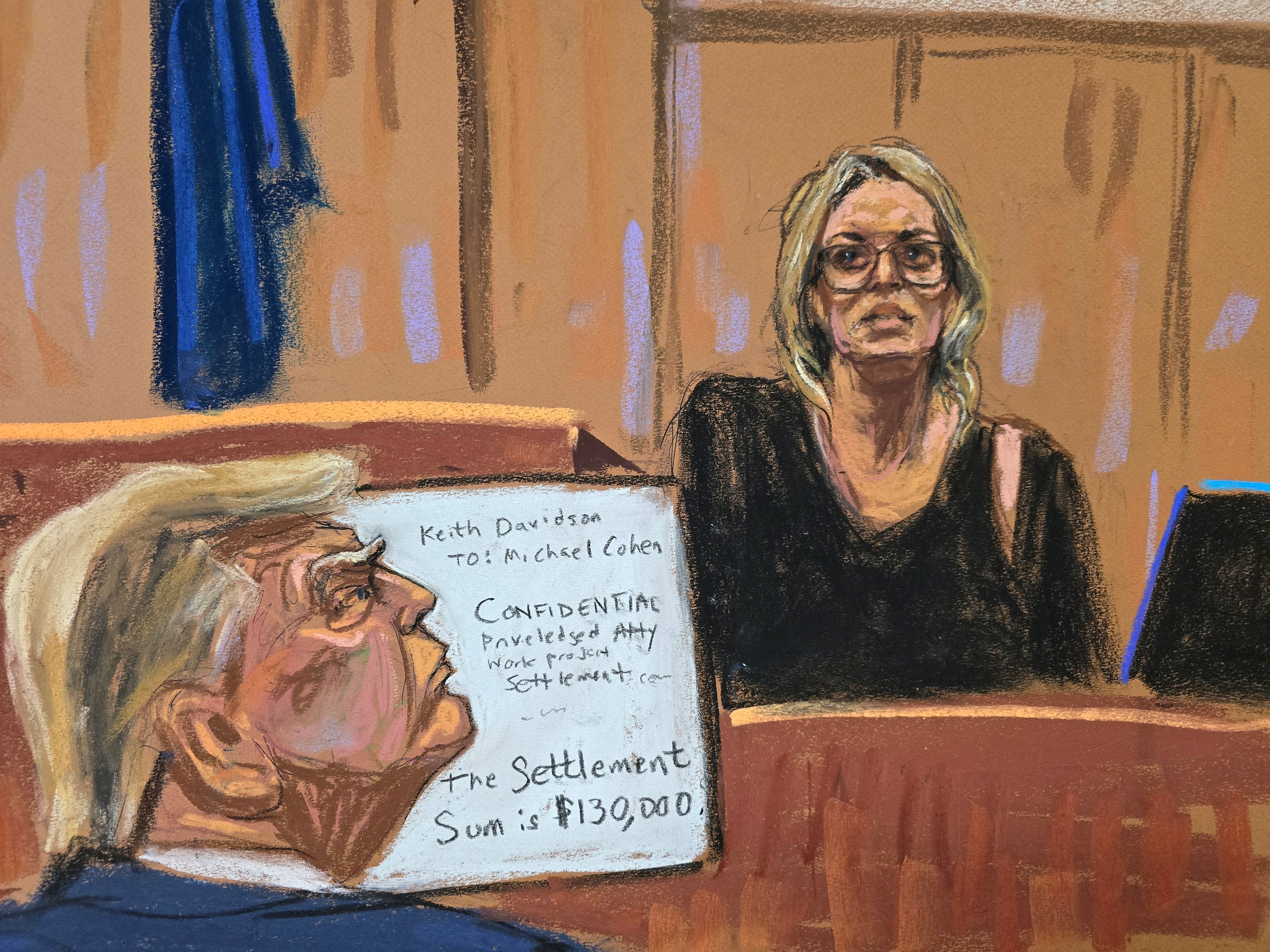
SATIN PAJAMAS AND A SPANKING
Sign up here.
Reporting by Jack Queen and Luc Cohen in New York and Andy Sullivan in Washington; Editing by Noeleen Walder and Howard Goller
Our Standards: The Thomson Reuters Trust Principles. New Tab , opens new tab

Thomson Reuters
Reports on the New York federal courts. Previously worked as a correspondent in Venezuela and Argentina.

Legal correspondent specializing in politically charged cases.

Andy covers politics and policy in Washington. His work has been cited in Supreme Court briefs, political attack ads and at least one Saturday Night Live skit.
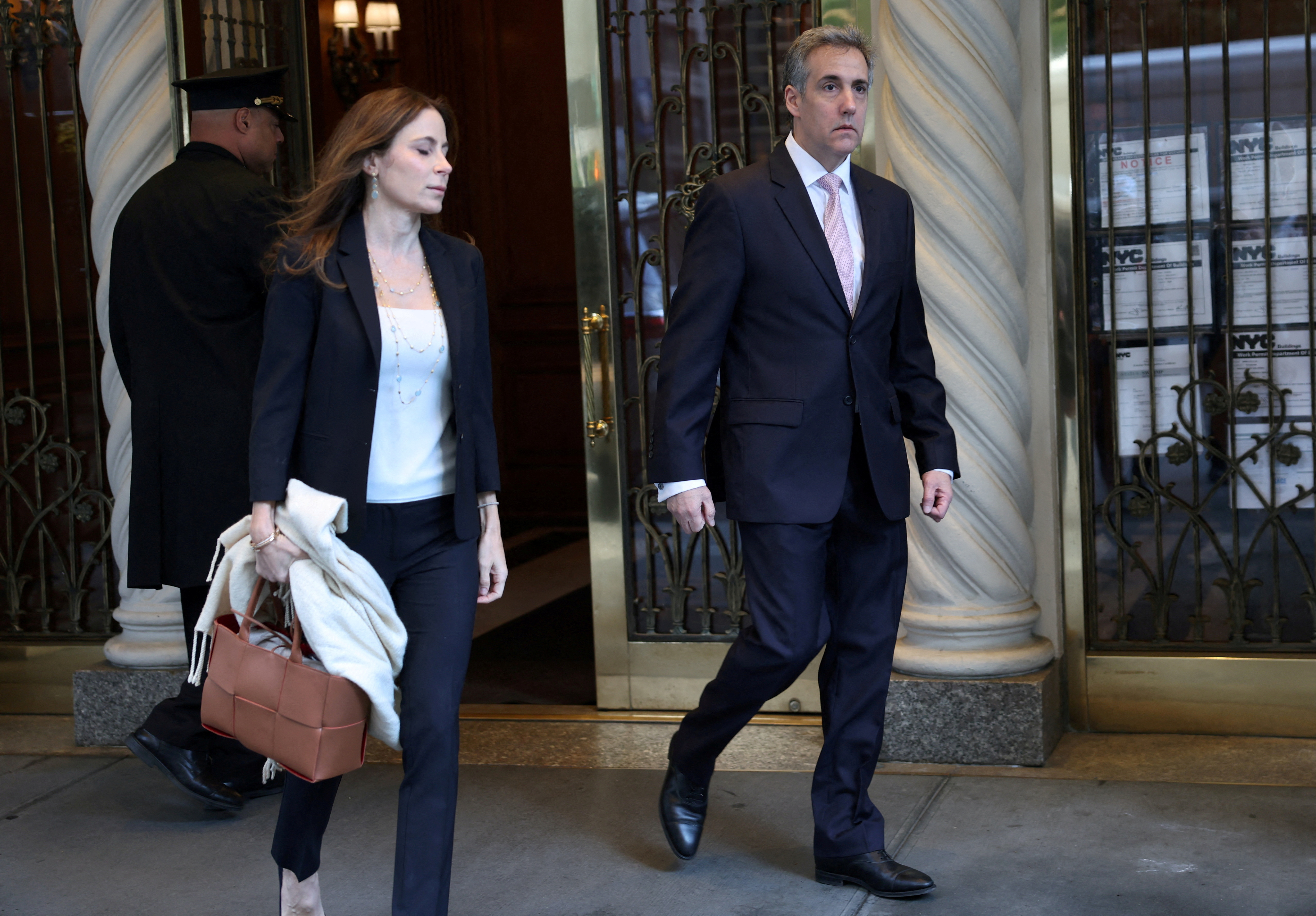
World Chevron

UK's Labour pledges 'ironclad' commitment to Ukraine during Kyiv visit
Britain's opposition Labour Party affirmed its "ironclad" commitment to Ukraine during a visit to Kyiv on Monday by the party's foreign and defence chiefs.
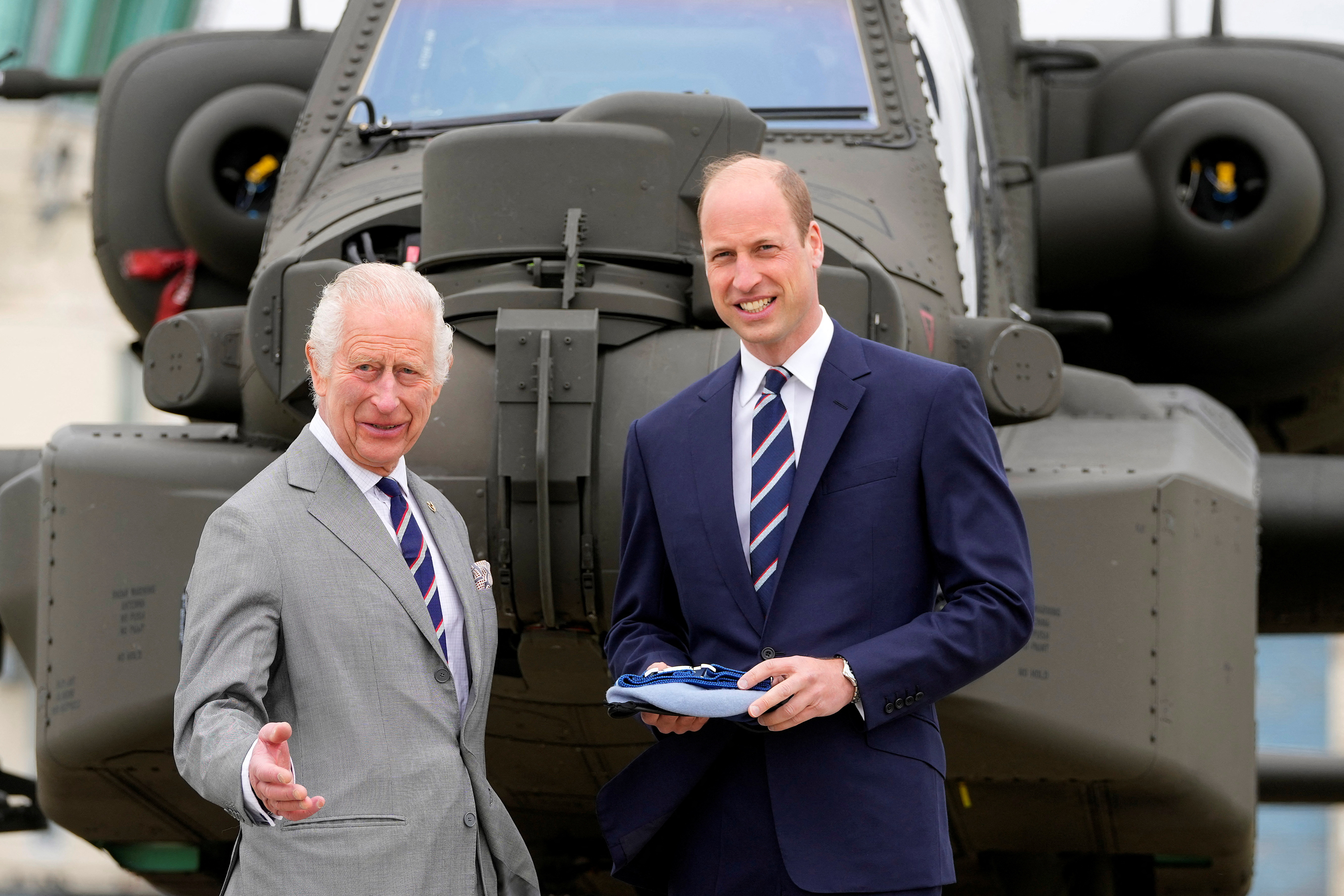

IMAGES
VIDEO
COMMENTS
Feature articles excel by presenting well-researched information, expert insights, and in-depth analysis, a practice highlighted in various magazine layout examples. This approach ensures that readers are not only moved by the stories but also have a greater awareness and knowledge of the topics covered, demonstrating the effective use of ...
Shumi Perhiniak. Shumi is a self-taught graphic designer and illustrator who has worked for Toni&Guy, Renaissance Learning, Baker Ross, and many others. Learn over 15 editorial terms and definitions you need to be familiar with if you are planning to design magazines. We will learn about kickers, stand-firsts, bylines, pull-quotes, and so much ...
A magazine contents page lists all of its content including regular pages and special features. The audience (or readers) will normally expect to find regular pages in the same place for each editon.
The anatomy of a magazine layout is complex. It requires a nuanced understanding of design principles to engage and guide readers effectively. By focusing on visual hierarchy, balance, consistency, contrast, white space, and navigability, designers can create stunning layouts and offer an exceptional reading experience.
In the dynamic world of magazine publishing, the anatomy of a magazine layout, especially the cover, is a canvas where current trends in color and imagery are vividly displayed. These elements are more than just visually appealing. They often mirror broader cultural or societal changes. This makes magazine covers a compelling topic for analysis.
In publishing, the masthead refers to the title of the magazine. Printed in large type, it is usually positioned at the top of the page and fills the width of the cover. These factors ensure the brand is instantly recognisable. The choice of colour and font weight will connect to the genre and ideology of the magazine. Consider the difference ...
Julia Clementson. Understanding the art of writing for magazines involves a multi-faceted approach. First, grasp the fundamental structure of a piece, then learn to engage your target audience with compelling content. The writing process includes thorough research, fact-checking, and crafting captivating headlines.
Magazine editorials, the cornerstone of print and digital media, are a powerful tool in the media landscape, offering insights, opinions, and analysis on various topics. The purpose of an editorial is to shape public opinion, inform readers, and provoke thoughts on significant issues. These editorials are more than just articles.
A Mutual Understanding. In essence, the structure of a magazine article serves as a bridge between the writer's intent and the reader's understanding. For writers, it's a tool to convey their message effectively. For readers, it's a lens through which they can better interpret and engage with the content.
Step 2: The Masthead If you're using your own copy of the magazine, which I recommend you do so that you can circle things and write notes on articles, continue past the table of contents to the masthead, and rip it out. The masthead will guide us through the first level of analysis of the magazine: seeing which sections are written by ...
Unit 1.1 Images and magazine covers 7 Key features explained Key features Examples from Text 1.12 Title: The type of font and its use of colour comment on the nature of the magazine and the context of its readership. Consider how some magazines place their title in front of the subject on the cover, while others place it behind their subject.
Create a main publication folder with the clear name (e.g., "Women's Lifestyle Magazine"). Inside this main folder, create an issue folder (e.g., such as "Spring 2019"). Inside the issue folder, let's create a folder structure similar to your magazine structure. In the most standard scenario, it would look like this:
Then individually take a copy of the slideshare and keep the magazine cover you are going to research for target audience data and how that might impact on the design features.. The analysis should include the following: The mission statement of the publication: look on their website for a tagline, catchphrase that encapsulates their mission - what they hope to provide to their readers.
A magazine is a regularly published collection of articles that might focus on any topic in general or on topics of interest to a specific group, such as ... Scholarly analysis of voting will certainly play a big role in the research, but, in order to analyze the popular material that the average voter might have been exposed to, the researcher ...
Introduction. If you want to learn about the codes and conventions of print media, especially the key terminology, this guide will take you through the typical features of a two-page spread and help develop your understanding of this media form. We are using the following mock-up to explore the different elements of a magazine:
Feature article is a result of lengthy research and editing. So all the information provided will be well investigated. 2. Purpose (s) The writer's intent can be to inform the people about a person, place or phenomena. 3. Stylistic Device (s) The heading and subheading should be catchy, this can attract the attention and curiosity of the reader.
How to Analyze a Feature Article. Analysis aims at increasing the reader's understanding of the given article's thesis and content. The analysis of the article is subjective as it expresses the reader's analysis, opinions, and ideas. Basically, analysis is nothing but breaking down and studying and thus evaluating the parts of the article.
6. Left Third: The left third contains the main feature article (Exclusive interview), as this is the core part of what may be inside the magazine. It also includes the main artist or band situated within. Barcode/Issue number/Dateline & Price Top and Bottom Strip: These are the strips below and above the magazine that give further information to what may be included in the magazine.
Founded in 1962, Film Comment magazine features reviews and analysis of mainstream, art-house, and avant-garde filmmaking from around the world. ... Features Streaming Behind Bars. By Phillip Vance Smith, II. Window on the world: incarcerated journalist Phillip Vance Smith, II delves into how people in prisons watch movies—the streaming ...
Search the following general databases individually for current articles published in academic journals on many different topics. (You will need to limit to "peer reviewed," "scholarly," or "refereed" to find only journal articles in these databases, as they contain articles from other kinds of publications like newspapers and magazines.)(Because of subscriber restrictions, these tools will ...
Futureproofing Parking Provision Today. Thursday 11 April 2024. Sponsored. Features.
Built environment body the Chartered Institution of Building Services Engineers has published fresh guidance on the role of internal shading in reducing indoor air temperatures in response to 40°C-plus air temperatures over the summer.
April 30, 2024 7:00 AM EDT. D onald Trump thinks he's identified a crucial mistake of his first term: He was too nice. We've been talking for more than an hour on April 12 at his fever-dream ...
Microsoft Excel is one of the top tools for data analysis and the built-in pivot tables are arguably the most popular analytic tool. In this course, you will learn how to perform data analysis using Excel's most popular features. You will learn how to create pivot tables from a range with rows and columns in Excel.
Issue 3487. 13 April 2024. Issue 3486. 6 April 2024. Issue 3485. 30 March 2024. Issue 3484. Read Issue #349011 May 2024 of New Scientist magazine for the best science news and analysis.
Negative (1) As you can see, more comments here are positive, but the entire block has an overall negative sentiment due to the final, disapproving remark. As in the previous example, this suggests that in a text block like this one, later sentences should be weighted more heavily than earlier ones. For the ratio, you might use the index value ...
Andreas Gebert/Getty Images. May 13, 2024, 9:17 AM. Evidence is mounting that Europe's far right will score better than ever before in the upcoming European Parliament elections on June 6 to ...
In the spring and summer of 1979, a series of diplomatic missteps and miscommunications contributed to then-President Jimmy Carter losing a greater share of the Jewish vote than any Democratic ...
Porn star Stormy Daniels described her 2006 encounter with Donald Trump in unflattering terms at his criminal trial on Tuesday, testifying she tried not to think about the sex while it took place ...